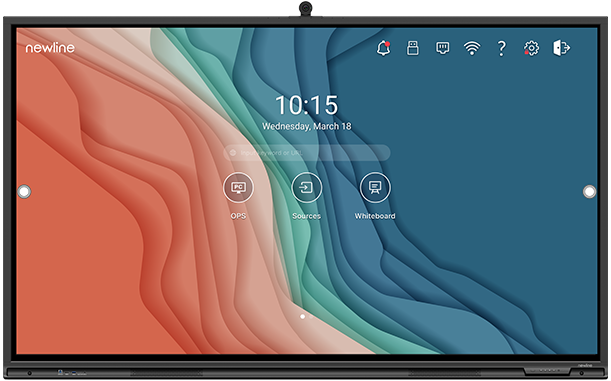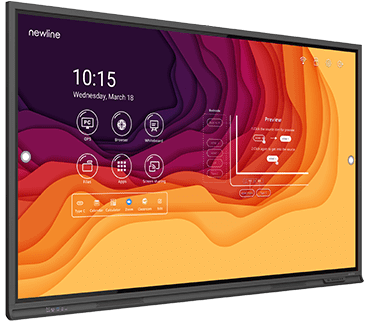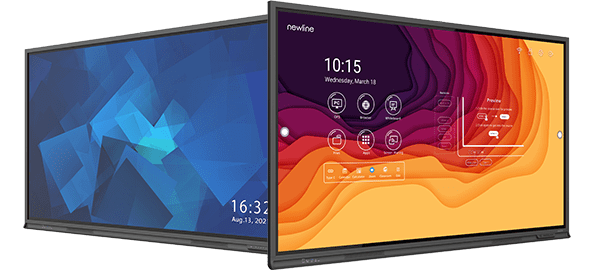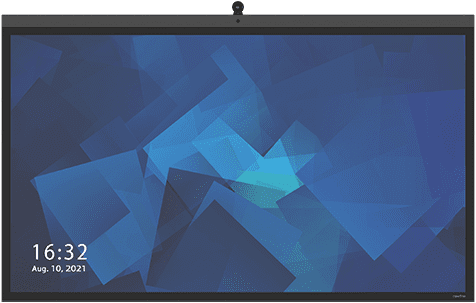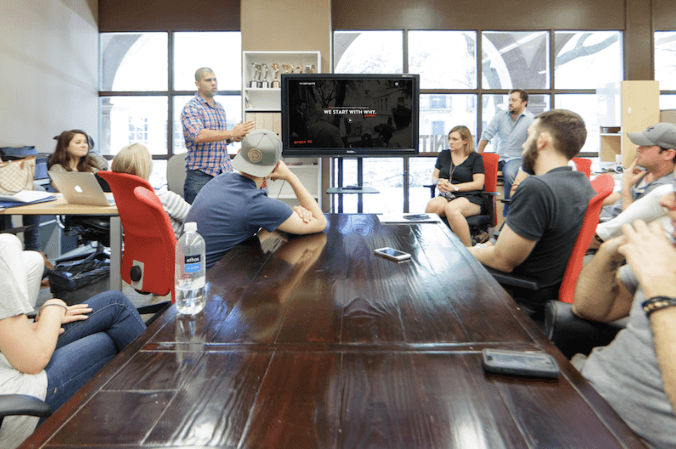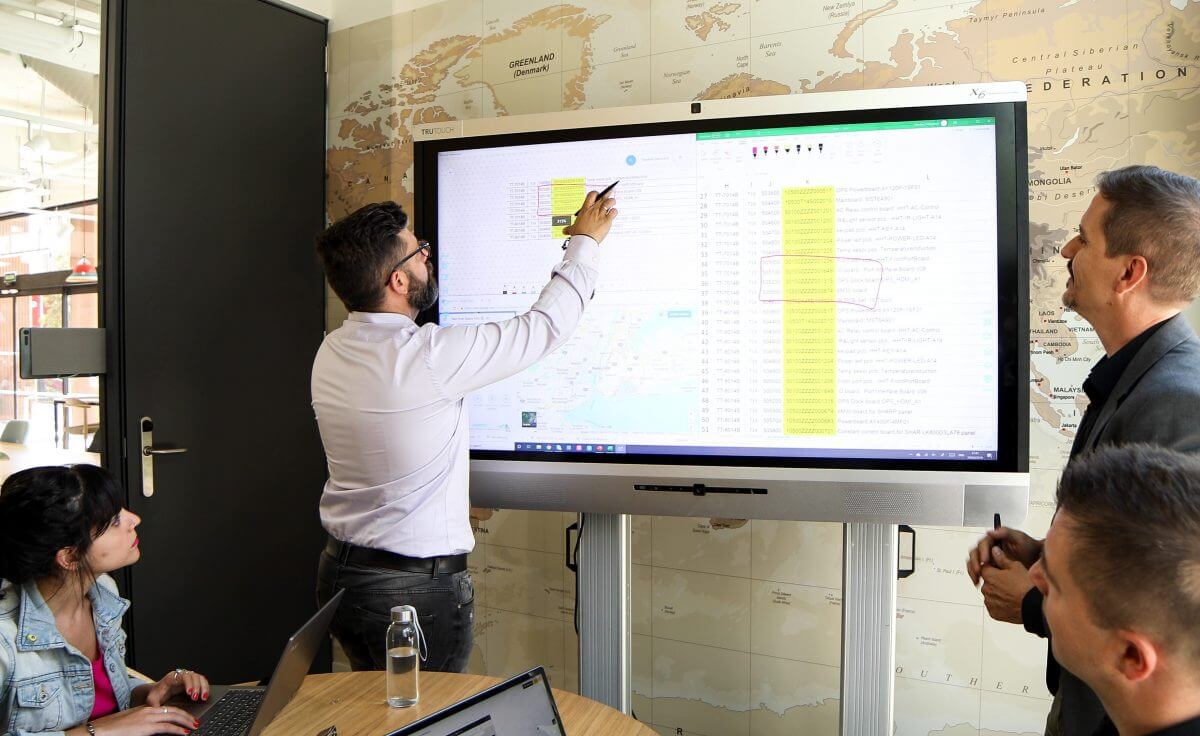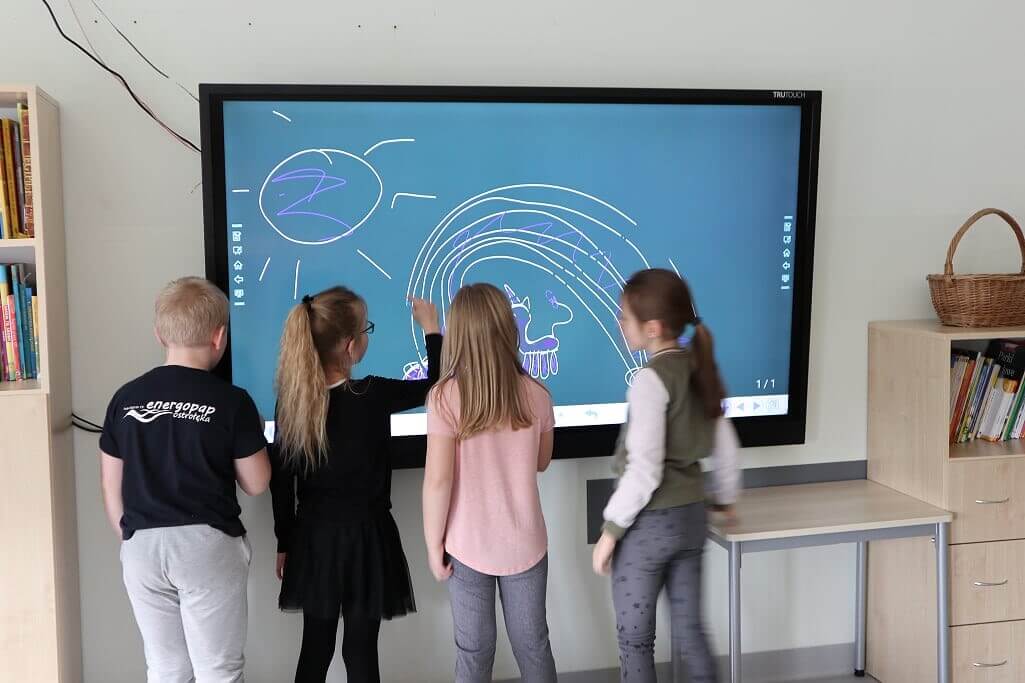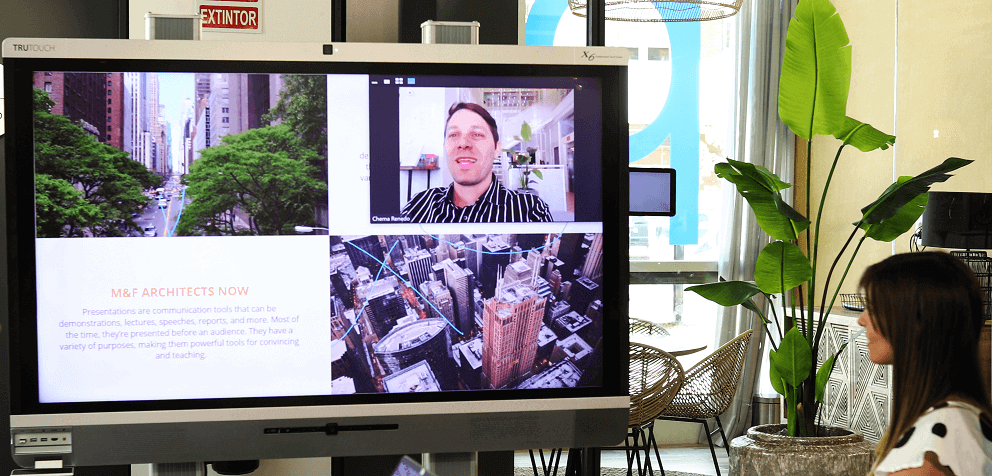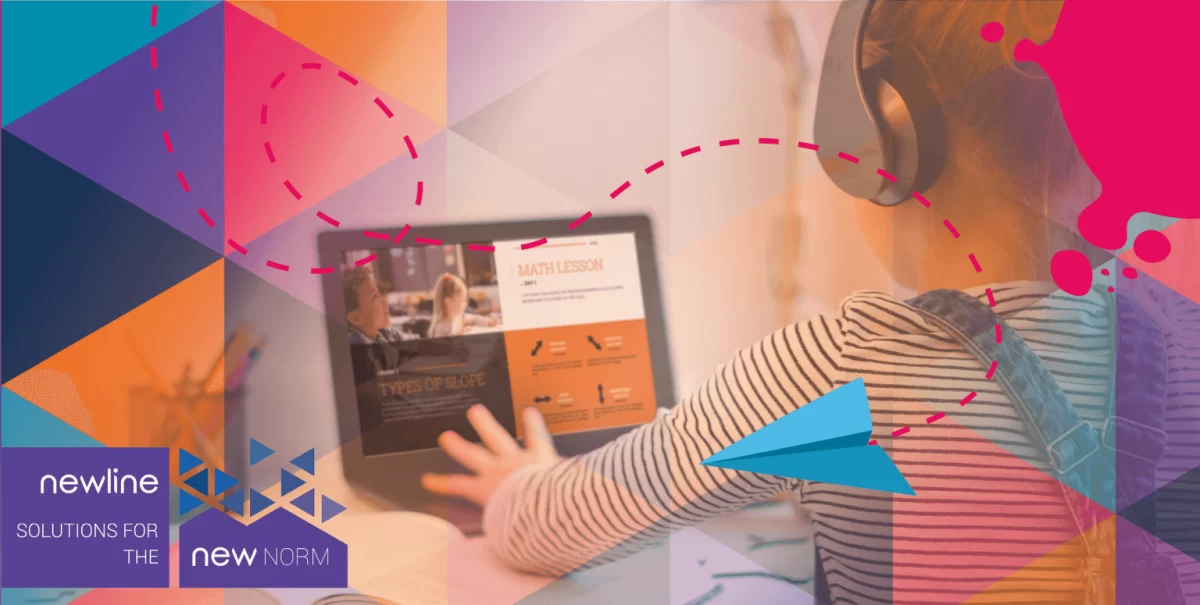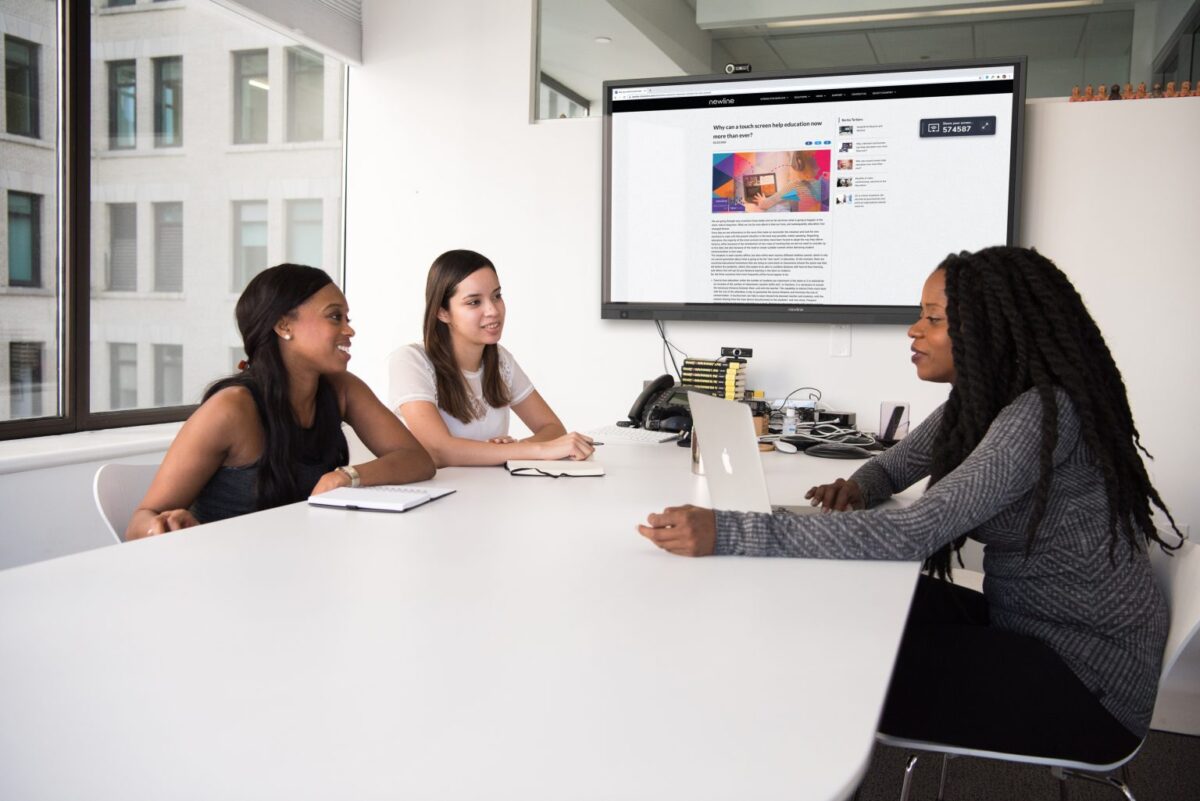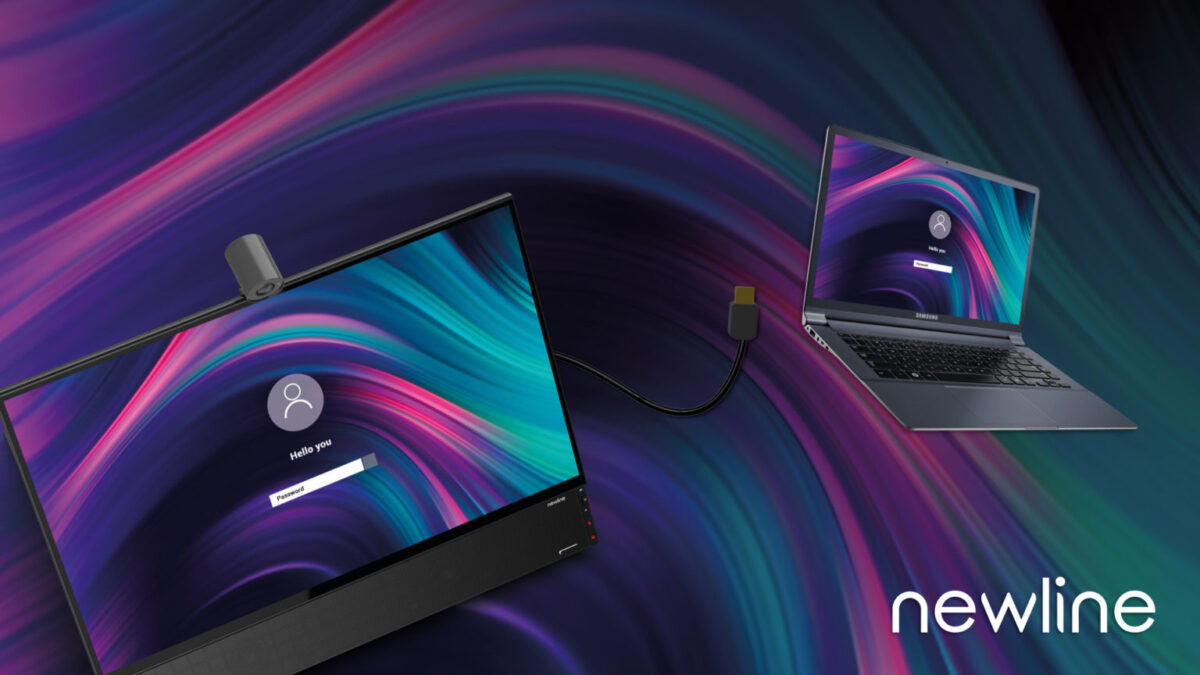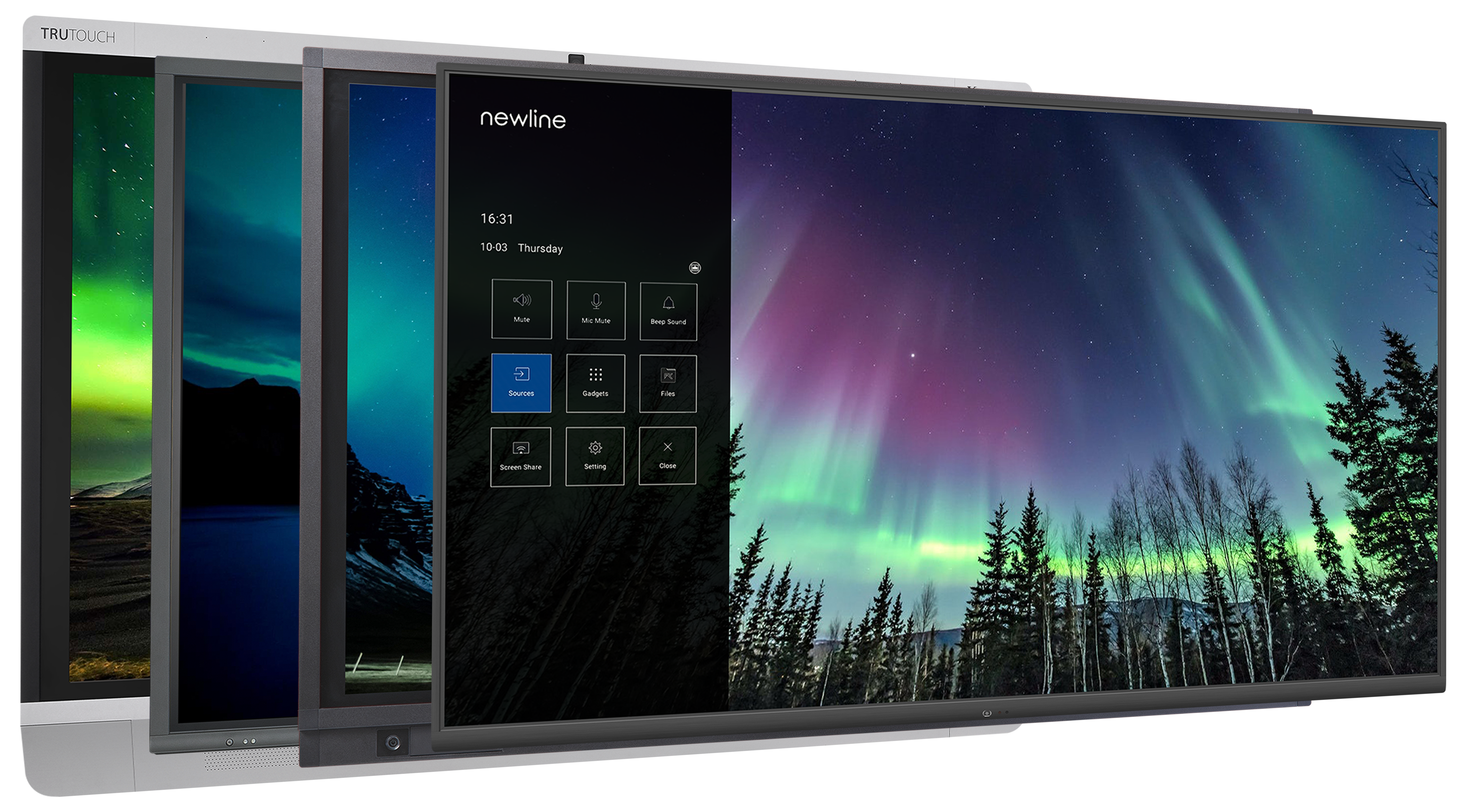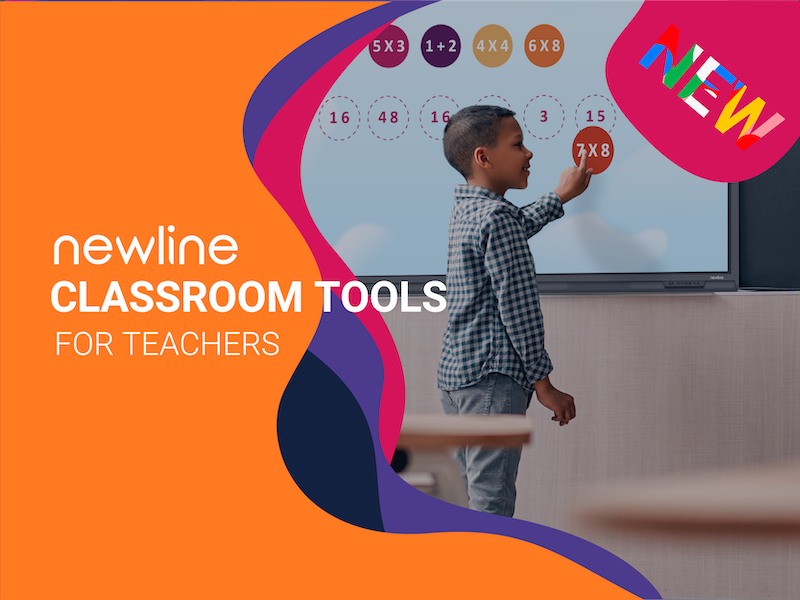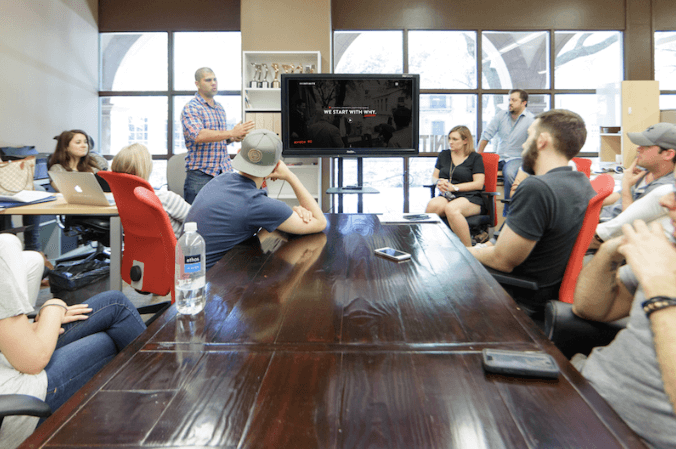
05 Apr 2023
UC in Critical Situations, The Ally That All Governments and Political Organizations Should Count on
The exceptional situation we are going through requires us to take different and effective measures to deal with such an unusual scenario and carry on with our lives in the best way possible. The authorities are clear about this: it is important to reduce mobilizations, but life does not stop and neither does the economy.
We are facing this challenge in the era of the greatest technological and digital development in history. Resources such as the Internet, different videoconferencing tools and interactive screens, create collaborative spaces despite the distance. It no longer matters where a person is, but if that person has the tools to connect to the World.
Thanks to a massive amount of technological resources, professionals can continue working to maintain the global financial flow while the authorities do their best to find solutions to beat a common enemy. Every day, political representatives across the World meet remotely with their team members and their foreign counterparts to define strategies to alleviate this difficult situation.
Newline is proud to supply state-of-the-art tools that enable governments and other political organizations to save the distance between their members.
Unified communications allow those remote meetings to take place, reducing the risk of contagion while addressing complementary issues such as costs or environmental impact. Let’s keep on collaborating and complying with the recommendations!
01 Jan 2023
The Power of Cloud Collaboration
The world is moving to the cloud. With cloud-computing programs like DropBox, Apple’s iCloud, and Google Drive, more and more individuals and businesses find that moving to a cloud service can solve several technological hurdles.
From a cost or hardware perspective, cloud services are a great aide to businesses. With these tools, companies no longer need to buy individual and expensive servers to store all of their important files and data.
Package plans from cloud services offer as much storage as a business could need, leaving your company without having to worry about server maintenance or hardware malfunctions. And with no in-office servers to maintain, you save money by not needing to hire out specialists when an issue arises.
Everyone in your office can connect easily to the cloud system of your company’s choice. Usually the only thing required is Internet access and logging in to the company account. No need to learn any complicated server setup to find the documents they need.
Cloud computing has walked hand in hand with an increase in business collaboration. Employees can access files from anywhere, more than one employee can access the server and file at the same time. Several cloud services, such as Google Drive, allows multiple people to work on a single file at the same time.
The days of a single person working on a document, saving it, emailing or printing it off for the next person to work on, can be safely put to rest. Now, all members of a project can access the individual files at the same time, working collaboratively in order to finish their tasks quickly and more efficiently. And without having to worry about opening or working on an outdated version of the document.
01 Jan 2023
How to Have a Bad Meeting
It’s not hard to have an unproductive meeting. Bad meetings cause employees and managers alike frustration and anxiety, and the longer these inefficient meetings drone on, the longer your team is unable to get back to work and making progress on their projects.
If you want to frustrate your employees and hold long, agonizing meetings, be sure to follow these tips:
Learn how to use complicated meeting technology right at the start of the meeting.
If the collaboration technology you use for your meeting is too easy to use, or too user-friendly, it won’t take as long to get set up right before a meeting. So instead of starting on time, you’ll need to take a few minutes not talking about the purpose of the meeting to get everything configured and learn how to interact with your collaboration tools.
Don’t have a set agenda, just ramble on.
Outlines for a meeting’s agenda help keep a team too on track to end a meeting on time. Having an agenda make the whole conversation more focused and engaged. It’s better to just ramble on with your train of thought than keep yourself focused and on task during the whole meeting by having a reminder of the meeting’s goals.
Review previous conversations and add nothing new.
To have a bad meeting, it’s best to take a while to get to the point of your meeting. Reading over the last meeting’s notes is a great way to slow down the momentum of your team. That way they can hear what items are still on their to-do list that they could be doing right now instead of sitting in a meeting. If you don’t add any follow ups or additions to these notes, your team will feel like you’ve had a meeting just to remind people of what your last meeting was about.
Don’t make any decisions during the meeting.
A good meeting is all about discussing your options, gathering information and coming up with a solution or game plan. So to have a bad meeting, make sure that you never walk away with a clear sense of what you will be doing next. Your team won’t be sure how to quickly proceed with your plans until either your next email or meeting.
Good meetings are important to your organization. Don’t make the same mistakes that breed bad meetings. Plan ahead to save time, and use technology that is easy and quick to pick up do you can start on time.
Meetings help your team get on the same foot and figure out your goals. But don’t keep them too long, since it’s only when the meeting is done that your organization can start working to meet those goals.
01 Jan 2023
How Collaborative Technology Can Increase Employee Retention
Keeping strong employees around is an integral part of your business. By increasing your employee retention, you can spend less time and costs training to get new employees up to speed. Your business runs more efficiently when everyone involved fully understands how each piece of the puzzle works.
While some factors employees list for quitting are beyond an employer’s control, such as moving to follow a spouse, there are several ways that increasing the level of collaboration inside of your office can help improve employee morale.
We took a look at some of the most common reasons employees quit and found ways that you can utilize state-of-the-art technology to keep your best employees happy and satisfied with their work.
Failure to engage their employee’s creativity
Employees want to be intellectually and creatively challenged. If they feel like they are bored or left unchallenged by their work, or have a lot of busy work, it might start them looking elsewhere for a stronger challenge.
Adding new technology to your office may help engage their curiosity again. Giving your employees a new tool that will help them get their more tedious tasks out of the way quicker, and on to more challenging tasks will keep them more intellectually stimulated.
Feeling like their contributions are not welcome or are not appreciated
Your office is a team. When a member of the team feels like they are not contributing anything to your goals or that their feedback is not valued, they themselves do not feel like a valuable asset to the team.
Including more collaborative equipment in your meetings can be a solid way to highlight the importance of your employee’s voices. Let them annotate and give concerns, suggestions and feedback in real time. And be sure to write on a screen or recording the meeting to show that you are listening to their input.
Time not valued or respected
Holding more efficient meetings, or even allowing employees to video conference in, can help reduce the time your employees spend sitting in a meeting room and not actively working towards finishing their list of day to day duties.
Instead of being forced to work overtime, or adjust their family or business travel schedules to make sure that they are in the office at meeting time, incorporate video conferencing and allow them a bit more room to breathe and not rush around.
More collaborative technology may not solve all of the reasons a good employee may choose to leave, but integrating more interactive technology can be a step in the right direction to reduce your turnover rate.
01 Jan 2023
Productive Benefits of Video Conferencing
One of the best features to come from a more collaborative workspace is video conferencing. With more interactive technology and better broadband services, video conferences became the foremost way to include other members of your team in your meetings, especially when not everyone is able to be in the same physical location.
Integrating video conferencing into your regularly scheduled meetings comes with many benefits. Here are some ways the it can help improve your business.
Reduced travel costs
The first benefit is the most obvious. If you can video conference into your meeting, you do not have to worry about additional expenses that team members, who regularly are not inside your normal office, whether they work from home or frequently travel for business, might accrue traveling to be a part of your meeting in person.
Prevents meeting delays
Someone running behind from a previous appointment who won’t be able to get to the conference room in time? No need to wait for them to arrive, go ahead and just conference them into the meeting from afar. Keeping your meetings starting and stopping on time are integral to your productivity.
Bring in more experts and trainers
When you need an expert’s opinion on a topic or need to hold staff training on a specialized subject, video conferencing allows you to bring in additional people to help your team without worrying about traveling expenses. Video also allows your team to visually follow what an expert or trainer might teach, instead of just listening, especially when the training is more hands-on.
Quicker decisions
When you are able to pool every member of your team into a single conference call, you no longer have to wait until you talk to the people who couldn’t make it. With everyone able to converse, no matter their physical location, your team can make those final decisions faster.
Expand your customer service opportunities
Video conferencing does not just benefit meetings; it can also greatly benefit your success with your clients. Call in to walk your customers through any support assistance they might require. Or give demonstrations over the video conference on how your product works and what it can be used for. That extra push to provide better service improves your company’s brand and reputation all across the board.
01 Jan 2023
4 Challenges Facing Small Businesses (And How to Beat Them)
Small business owners face lots of everyday obstacles in order to compete in today’s market. As technology grows and expands into deeper integration with business, small business owners meet new challenges that technology continues to produce.
But no need to throw in the towel yet. We’ve compiled a few of the biggest problems technology can cause for a small business, and how to overcome them.
Problem: Lack of Information Technology Knowledge/Help
New technology may seem complex and confusing. Many small business owners have little experience with technology and can easily feel overwhelmed trying to sort through all of their options and going down a list of what items may be necessary to install to get their business up and running.
Solution: Use Search Engines to Your Advantage
While researching your options takes time, search engines like Google and Bing are your best and cheapest alternative to hiring an IT company to handle setting everything up for you. With a few moments of research using appropriate keywords, you can easily find the answers to any questions or issues you might have or run into.
Problem: Unable to Scale IT Needs as the Company Grows
After your business takes off, your website or internal storage may no longer be sufficient to handle your needs. As you hire new hands, you may not have the right services available to add new email addresses for your employees or email storage left.
Solution: Prepare Ahead of Time
Plan ahead as best as you can. If you only need 3 email addresses right now, but your service provider offers a choice to more, choose more. Choose a website provider whose servers can handle a lot of visitors at once and shows a willingness to adopt new website tricks. Planning and preparing for your business’ success is not just a good mindset to stay in, but a good technology strategy.
Problem: Training New Employees on Your Technology
If your CRM, email, or internal databases use a confusing, or not as user-friendly system or interface, it can be hard to get new employees up to speed quickly. Instead of taking care of other business matters, small business owners might end up spending more time than they’d like answering technology questions.
Solution: Collect and Record All How-To Information
In your research, make sure that you evaluate how helpful and useful a product’s support system is. The more helpful a product’s support is, the easier it will be to turn to them for advanced help. Keep a collection of all help, support and how-to information you might have been provided
Problem: High Cost of Technology
Technology is expensive. All the small costs add up over time, and most technology needed to keep your business running require monthly or yearly subscriptions. If your software or hardware is proprietary, it can limit your ability to find cheaper alternative solutions.
Solution: Research and Invest Wisely
Research is once again your friend. Before you put money down, be sure to check on how effective a product is or that it will not cause more headaches than it will fix. Shopping around also can help you find the harder to find at first glance, but more affordable, alternative. Be wary to not buy everything you think might be helpful or just looks impressive. If cost is a concern, invest only in what is most important to your business’ long term goals.
01 Jan 2023
6 Tips to Becoming a More Innovative Educator
The classroom is ever-changing. As time and technology slowly tweaks the way today’s students learn and adapt to new information, the best teachers are the ones who think outside of the box.
Innovative educators constantly adapt old learning strategies and lesson plans into something modern students can learn from and grow.
Educational technology is a great way that you can spice up your classroom, but it is not the only way. We found 10 things that innovative teachers do that fuel their student’s success.
1. Prioritize what is most important to your student’s future.
Innovation requires a level of honesty with yourself, especially on your goals and what is realistically possible. If you prioritize teaching the skills and lessons that will be the best for your students, you’ll worry less about trying to get everything into your lesson plans and focus more on the topics your students are more invested in.
2. Teach your students to find reliable sources.
The old school library has become outdated. Now, knowledge and information are at your students’ fingertips with search engines. Learn the ins and outs of online searches and teach your students how to effectively find reliable, useful resources during their online sources.
3. Know what tech and apps are out there – and what they are best used for
New educational apps can be exciting. But make sure that the time it takes to learn a whole new app and system is worth the end result. Avoid using new apps just because they are new and look cool. Make sure that your students learn something throughout the whole process from start to finish.
4. Be flexible but keep your high expectations
Students like a challenge. When a task is too easy, they will grow bored and start tuning you out. Having high expectations for your students’ abilities lets you keep them constantly challenging themselves to grow. But avoid the trap of becoming inflexible. Bend where you need to, and only as far as you need to.
5. Don’t let restrictive standards be an excuse for less engaging lesson plans.
Rules are rules but standards can be more like guidelines for your lesson plans. Avoid creating lesson plans limited by administrative standards. Take those initial guidelines and use them as your starting point in your lesson planning. Look at your topics from all angles to find ways you can branch off from the normal lessons and create a plan that will continue to engage your students.
6. Don’t be afraid of failure.
Ultimately, innovation is about failure. Educators, as well as students, learn more from failing than they do from always getting things right the first time. Innovators take risks, and when something doesn’t work as expected, they tweak their plans and lessons as they go along. Don’t be so afraid that a lesson has a chance to not go as planned that you refuse to try something new. Your students are worth the risk.
01 Jan 2023
3 Ways Interactive Classrooms Increase Student Engagement
The last thing you want your students to do is stop paying attention in class. Even the dullest subject or most information packed lecture can be spruced up by adding an interactive element to your lesson.
Replacing your chalkboard or whiteboard with a large, interactive display may be the best tool in your arsenal. Here are some creative ways that you to quickly bring your students’ attention back up to speed.
1. Interactivity breaks up the traditional lecture
Lectures are useful when you have a lot of material to cover, but we understand that temptation to start dozing off. Today’s students respond better and retain more when that information is broken down into smaller, more manageable chunks.
By inserting moments for your students to come up and point out or interact directly with the board, it keeps the pace of your lesson moving along nicely, giving your students time to process what you have talked about so far, and getting them involved and moving again before going back to new information.
2. New technology peaks student interest
New gadgets usually prompt a sense of curiosity and interest, which can keep your students more involved in your lecture as they watch and learn not only the information you are giving them, but how you are using the tools on hand.
More visual elements that come with the latest educational technology are also designed to appeal to different learning types. Students who are more visual or hands on learners will gain a great deal more from a more interactive classroom.
3. Real time responses keep students more engaged
Your students can fill in and respond to changes on the interactive display in real time. No need to slow down and wait for students to write their answers down and pass in their worksheets in as orderly as possible.
Have them come up and present their answers and write out their answers or calculations on the screen. Their marks and annotations show up instantly and for the whole class to see. This way, the entire class can also work together to produce the right answers, fostering discussion.
01 Jan 2023
Why EdTech Should Be Easy to Use
A common assumption is that to stand out from the competition educational technology must have lots of different features. However, this can lead to making their product confusing for a new user or require an excessive amount of training time before the technology is able to be used effectively in the classroom.
Educators need technology that is user-friendly and quick to learn. While some training will never go amiss, your product should be easy for someone to interact with and quickly pick up how to integrate their new tool into their daily lessons.
Schools tend to have some hesitation investing in more complicated technology. Teachers already have a lot on their plate to juggle, between assisting students, creating and tweaking lessons, and more. Spending hours learning how to use an overly complicated tool sounds like the time investment might not be worth the reward.
Simplified devices stand a stronger chance to truly transform a classroom. The easier and friendlier the technology is to learn, the more likely even the most hesitant educators will take to using those tools in their classroom.
So how do you make sure that your EdTech tools are easy to use?
Decluttered User Interface
Having lots of bells and whistles can be useful. But if the interface is cluttered or overly complicated, this can intimidate users and confuse them. When a teacher needs to be efficient with their time, having to comb through rows and rows of different options looking for one item can be a deterrent to future use.
Simplify
The best tools are intuitive to use. The faster your learning curve, the less time it will take for anyone to be able to walk up and begin utilizing the EdTech effectively. So if a substitute teacher needs to take over a lesson, the ideal scenario is that they can walk into the classroom with little to no instruction and be able to keep the students on course.
Customization
If a user interface is customizable, users can quickly condense their tool bars down to the most productive features. This helps declutter the UI as well to make it easier to find the tools that you need.
01 Jan 2023
Benefits of a 1:1 Ratio in the Classroom
As educational technology becomes more prominent in the classroom, many schools have taken to creating a 1 on 1 ratio between students and technology. Whether they are computers, laptops, or iPads, teachers have found great success when each student in their classroom has their own individual device to work on.
These devices are normally pre-loaded with all of the required apps and software that the student will need, locking down the ability for students to add anything additional that might distract them from instruction. And these programs have seen an increase in student engagement and interest in the coursework.
Not only are students more tuned into the work at their fingertips, teachers saw that student had an easier time communicating with their teachers about questions or issues with assignments. Having a digital tool like the phones and other devices that they use at home helped them better relay their problems.
With online coursework and digital quizzes and tests, teachers could spend less time grading and more time giving real-time feedback to students, saving them time to focus more on student instruction and less on reading over and constantly grading papers.
Costs also went down, as replacing an app on an iPad, instead of replacing a full digital camera set, costs next to nothing but the time it takes to download. CD players, speaker systems, scanners, and recorders that all used to need to be physical equipment, all go digital and immediately remove the old lines in an invoice, freeing up your budget to take on additional school projects.
Being able to provide direct instruction using technology is a boon to classrooms all over the country. And as more and more schools take on 1:1 projects, edtech will continue to show a marked improvement in overall course effectiveness.
01 Jan 2023
Long Term Benefits of Digital Class Projects
As digital learning slips into more and more class classrooms, starting from elementary school and going all the way through high school, students gain more opportunities to work on digital class projects and assignments.
These assignments, from simple presentations to more involved media projects, have been a staple of a student’s more hands-on learning through the hands. But the advent of making these projects digital now gives those students an additional perk: the ability to create an online, digital portfolio of their work.
Instead of having a project only be saved as a solitary piece of paper, or something captured on developable film, assignments can now be saved to a cloud storage system like DropBox and videos can be published on an easily shareable platform like YouTube. Having a long collection of their work can better aide a student when it comes time for the infamous college application process.
Students planning to get into more hands-on fields, such as Film or certain types of Art and Science subjects, have a new method of saving their work as they grow. When those students start applying to colleges or technical schools, they will have a long backlog of videos and digitally saved projects that they can submit with the rest of their application to show off their learned finesse over the years.
With proof of their technical skills, students almost instantly become stronger candidates for their top choice schools. It is one thing to list off your accomplishments on paper, but having hard evidence, such as digital projects, can do nothing but boost a student’s credibility.
Turning the classic classroom projects and presentations digital also prepares your students for the future. More businesses and fields of study are going digital as well. Giving students more opportunities to explore the digital tools available to them not only challenges them, not only keeps them more engaged, but grows their technical and motor skills all at the same time.
01 Jan 2023
Is Network Security and Privacy in EdTech Really That Important
EdTech apps, software, and devices can make learning in the classroom more engaging and interactive. But educational technology is still technology. When using EdTech, whether it is a basic calculation app or a more in-depth blogging platform, data is being input by both teachers and students, and sometimes that data can be sensitive and full of private information.
Keeping your school’s network and infrastructure safe and sound is vital. So we found a few tips to help keep your school’s information confidential.
Tip #1: Encrypt everything!
Anyone can intercept or take a peek at your network traffic over an open Wi-Fi connection. An easy way to block these interferences is to encrypt all of your data. Put passwords on your network’s Wi-Fi and require logins (with strong password requirements) in order to access the system. And use full-disk encryption on any computers and laptops your school uses or sends home with students.
Tip #2: Teach computer safety and security
A breach can still happen even if you lock your network down tight. Educate your staff and students to never login to websites that are not secure, such as websites that do not use HTTP. Other useful information, such as how to avoid phishing sites and not placing any real personal information online will boost your school’s security, as well as teach good technology safety for your students’ future.
Tip #3: Avoid the Cloud
While cloud technology is useful for storage and collaboration, make sure that everything that gets sent to a c loud system or third-party system is encrypted. Any un-encrypted data sent to a cloud storage system can be accessed by the provider, making it vulnerable.
Tip #4: Ask security questions about the EdTech before buying
Find out before you buy whether a device will be safe to setup on your network. Talk to the edtech providers and ask them important questions about the data their programs will be collecting, such as:
- What information does the app/software/device collect?
- Who can see, access, change or delete the information being collected?
- Why is this information being saved?
- Where does this information go? Are the cloud solutions and databases secure?
Tip #5: Stay up to date with updates and fixes
Update your software and computers often. Most breaches come from known vulnerabilities in a system. Keeping your systems up to date with the latest patches will make these types of easy breaches harder. Make sure to keep your anti-virus and protection software up to date and routinely scanning for potential problems.
01 Jan 2023
10 Top Productivity Hacks
Not sure how to keep your office running as productive as possible? Try these ten tricks to keep yourself more focused and more efficient during your work week.
- Stay up to date with what’s happening in your industry.
Don’t get stuck in the trap of wasting time trying to catch up with your business. Follow industry blogs, news channels, social media, and even podcasts to stay on top of what is happening in the world around you. - Break big projects into smaller tasks.
Giant tasks look daunting and often like an unclimbable mountain. Break that mountain into smaller, more digestible chunks and you will find yourself racing to the top every time. - Surround yourself with productive people.
Hire employees and team members who strive to give 120% every day. Having productive people around you reaching their goals will help inspire you to do the same. - Focus on real solutions, instead of temporary fixes.
If you are always chasing after a temporary fix, you will never find the long term solution. Take the time you need to create a reliable solution that won’t need a temporary fix after it goes out. - Aim for 30 minute meetings.
The shorter your meetings, the sooner your team can get back to work making your goals a reality. It’s that simple. - Be ready to say “no”.
Don’t be so eager to please you make promises you can’t reliably keep. Save yourself the stress of over-commitment by remembering it’s okay to say “no” every now and then. - Use more collaborative technology.
Technology exists to make our lives easier. Use apps and devices that are simple and easy to use to save time in your day to day office workload. - Follow the 5-minute rule.
If a task takes less than 5 minutes to complete, don’t procrastinate. Do short, simple tasks immediately to free up that space on your “to-do” list again. - Get rid of the clutter.
Messy desks make for messy minds. Keep yourself distraction free and more organized by removing things from your desk that just stand in your way. - Keep an optimistic attitude.
Your outlook affects everything. Stay positive, even when you’re stressed, and not only will you not slow down the people around you with your negativity, you’ll give yourself a boost to get even the most discouraging projects finished on time.
01 Jan 2023
How to Better Engage Your Employees in Your Meetings
The most effective and important meetings always include one vital element: engaged employees.
Your office is a team, and if your teammates are falling asleep in a meeting or not contributing to the conversation, your organization is not running as efficiently as possible.
So how do you keep your employees from becoming disengaged?
Assign team members meeting responsibilities.
Giving someone a job to do during a meeting is an almost immediate way to keep that individual member actively engaged in what is happening. Assign simple tasks for your team to assist you with, such as setting up the displays, bringing refreshments, being a timekeeper, or someone to help keep discussions from going too far off-track.
Talk less. Foster discussion more.
A lot of employees dislike meetings because they do not feel like they have a real voice in how their company proceeds. Help them feel like their input and thoughts are valued by spending less time talking. Once you’ve given the high points on a topic, instead of being the main person talking, try to foster discussion amongst your team. The more they talk, the more involved and engaged they will be in not just the outcome of the meeting, but following through once the meeting is over.
Let team members run parts of the meeting.
Another way to give your team members more engaging responsibilities is to surrender the lead on a discussion to them. Use the assets of your team. If someone in your office is a master of a subject related to your goals and tasks, give them a heads up and let them run that part of the meeting. They’ll have stronger answers to questions and it shows a level of trust in your team.
Request feedback after the meeting.
Every group of people works differently. Be sure to gather information and feedback about what your team members liked, or disliked, about a meeting. Ask them one on one, or ask for information using anonymous surveys. If your team all seems to be saying the same things, take their input and make adjustments to how your meeting flows.
01 Jan 2023
5 Benefits of Optical Bonding
Have you ever wondered about the technology behind your touch screen? Knowing about the processes of screen bonding technology can empower you to make a better decision when getting an interactive display.
Optical bonding is the process of gluing the touchscreen glass to the LCD cell in order to completely fill the air gap between them. This is done to improve overall performance, decrease the total display weight, and make the touchscreen sturdier.
Traditionally, interactive displays are attached to LCD cells with adhesive tape by the edges of the screen glass. This creates an air gap between the LCD cell and the screen glass that is detrimental to the performance of the display no matter how thin the air gap is. The gap results in setbacks which include a more fragile screen glass, loss of touch accuracy, and a narrower viewing angle, among others.
There are many benefits that come with the optical bonding of a display, all which enhance the performance of the interactive display in varying conditions and allow a greater range of application needs to be met. Here are the top 5 benefits:
Greater durability
The optical bonding process better protects both the cover glass and LCD cell from shock, as the hardened adhesive behind the glass acts as a shock absorber. Shake and shocks are less likely to damage the display and glass, making it an important benefit for transportation applications. In the unlikely event that the glass is damaged, shards of broken glass will remain stuck to the optical adhesive, making it an important benefit for safety reasons in classrooms and meeting rooms.

Improved viewing experience
An optically bonded display eliminates the internal reflection between the screen glass and the LCD cell. This results in improved contrast, which enables the display to be better seen in brighter environments. Additionally, the elimination of internal reflection provides a wider viewing angle, allowing the display to be seen more clearly from wider angles in bigger rooms. Whether you have student desks at the front corners of the classroom, or you have to cram seats up the front sides of the meeting room, everyone will be able to see the screen clearly without reflection.

Improved touch experience
Optical bonding reduces parallax, the refraction angle of light which makes the physical location of a pen or finger on the glass appear to be different from the corresponding point on the LCD, depending on your line of sight. This leads to inaccuracy of touch and a poor user experience. Optical bonding removes the air gap, which eliminates parallax to give you the most accurate touch, for the most natural and reliable experience.

Maximum dust & moisture protection
The elimination of the air gap between the cover glass and the LCD panel means that dust and moisture are unable to penetrate the glass and cause condensation on the inner surface of the glass. This is especially important in humid environments, where the high humidity can cause fogging on a non-optically bonded display over time. It is also important for transportation and storage, ensuring the displays remain in an optimal state for a much longer time.
Reduced display weight
The optical bonding process allows the cover glass to be thinner, as it is supported by a layer of hardened adhesive. This significantly decreases the total display weight, resulting in a much lighter display that is easier to handle and transport.

Optical bonding is the only real bonding. While some displays claim to use alternative bonding processes, only an optically bonded display is truly bonded. Other methods are no different from the air bonding process, which uses tape to attach the LED cell to the glass, making the air gap inevitable. Only an optically bonded display can provide all of these benefits by completely eliminating the air gap.
Although optical bonding is common in high-end smartphones, it is harder to apply the use of such technology to larger screens like interactive displays. Newline Interactive employs the most advanced technology in optical bonding to evenly bond displays and offer optically bonded displays as large as 86”.
Newline proudly incorporates optical bonding technology to deliver interactive displays with the best user experience available. Optically bonded displays are more durable, easier to handle and transport, and provide a better viewing and touch experience for everyone. Newline’s line of optically bonded displays includes the TRUTOUCH X series 4K and the TRUTOUCH VN series.
01 Jan 2023
Behind the Touch Technology of Newline Interactive Displays
Interactive displays are powered by touch technology, a term referring to the technology that allows touch to be detected and located on the display area of a screen. There are various types of touch technology available in the market today. All of them enable touch on your interactive display. However, they all work differently and provide varying advantages which are suitable for a diverse range of applications and needs.
Newline Interactive displays incorporate several types of touch technology to best accommodate the different applications that interactive displays can have in any sector with any needs.
Below are the different types of touch technology used by Newline displays:
Advanced IR
Infrared (IR) touch technology works with light beam interruption technology. IR lights are projected across the top of the display surface then received on the other side of the screen. Touch is detected by the light beams where the trajectory is interrupted.
IR touch technology has improved quickly over the years and offers many benefits to interactive display users. It scales to bigger sizes very economically, which makes it the perfect solution for large displays. Advanced IR touch technology allows multiple touch points at the same time for simultaneous interaction. It also supports object recognition, differentiating between thin stylus tips, fingers, and palms.

Interactive displays with advanced IR touch technology are great solutions for the education sector. They provide great scalability for large classrooms and allow simultaneous interaction for group work. They also suit small to medium sized companies looking for an intuitive and adaptable display to satisfy all their meeting and conferencing needs.
The Newline VN Series and RS Series incorporate advanced IR touch technology to deliver stunning, scalable displays fit for a wide range of applications. The VN Series combines advanced IR touch technology with optical bonding to get a smoother and more accurate touch experience.
P-cap
P-cap (Projected Capacitive) touch technology, unlike IR, works from under the display glass. Conductive sensors underneath the touchscreen glass detect touch with the help of electric circuits. As P-cap technology detects electrical charges, you can use anything conductive to write on the touchscreen, including your fingers.
P-cap technology was introduced into consumer products with the iPhone. It gives the user an intuitive, fast and responsive touch experience. P-cap does not scale as well as IR technology and is a better fit for smaller displays.

Interactive displays with P-cap touch technology are great solutions for corporations and higher education. They make reliable displays for small meeting rooms and classrooms with varying usages.
The Newline X Series X7 interactive display incorporates P-cap touch technology to deliver a smooth and responsive writing experience which users find natural and intuitive.
InGlass™ IR
InGlass™ is an advanced and improved IR touch technology developed by FlatFrog, a Swedish pioneer in innovative interactive technologies. InGlass™ makes use of Frustrated Total Internal Reflection (FTIR). This technology works by injecting light wavelengths into the glass of the display and detecting touch disturbances via patented algorithms.
As InGlass™ does not require sensors to be placed anywhere on the glass, light can pass freely without interference, giving a brighter, clearer image. Additionally, the lack of sensors removes the need for bezels, which results in slimmer frame displays.

InGlass™ touch technology brings real-time response and speed without delay. It provides the smoothest writing and drawing experience possible, comparable to writing with pen on paper. Displays with InGlass™ touch technology are the perfect fit for all corporate and educational spaces looking to adopt the latest and most innovative trends in interactive display technology. They suit huddle spaces, meeting rooms, labs and classrooms with a need for an intuitive and exciting interactive collaboration tool.
The Newline X Series is enabled by InGlass™ touch technology to bring you an unparalleled natural-feel and silky smooth touch experience. Interact with your display like never before with the magic of InGlass™ touch technology.
Newline offers a wide selection of interactive displays to help you upgrade your workspace and enable your teams to collaborate better. Newline interactive displays incorporate different touch technologies to ensure there is always a fitting solution for your collaborative needs. Check out our lineup of interactive displays and find the perfect one for you today.
01 Jan 2023
Interactive Touchscreens in the Classroom
One of the most important factors in changing the way schools teach today is finding new and innovative ways to put the power and control of learning into the hands of the student. Educators who have accepted and adapted to this modern way of teaching in a flipped classroom environment, and who are embracing smart interactive technology, have seen their students’ excitement and attention skyrocket.
From K-12 to higher education, students excel in a learning environment that keeps them interested and allows them to be more hands-on, more collaborative, and more creative throughout the entire process. To achieve this, schools across the US are embracing the benefits of interactive touchscreens in the classroom.
What is an interactive touchscreen?
Also known as an interactive flat panel display, interactive touchscreens are the new standard display technology for classrooms. Obviously, today’s digital age has made chalkboards and markerboards obsolete, but even standard TVs or projectors are not sufficient in today’s classroom. Not only do they offer engaging collaborative features not available with a standard LED TV, interactive touchscreens are a brighter, crisper, and more efficient alternative to even a standard interactive whiteboard. Interactive whiteboards typically use infrared sensors around the screen to detect touch, and the displayed content is typically projected from a separate projector.
Interactive touchscreens on the other hand are an all-in-one compact display with an embedded or on-board operating system and generates content internally without the need for an additional projector. Additionally, interactive touch panels offer true versatility for the classroom with features like intelligent touch, personalized UI, built-in wireless casting, and additional I/O ports to connect additional devices as needed.
Of course, one of the true benefits of having interactive touchscreens in the classroom is being able to cultivate an environment for whole-class engagement and truly put the power of learning back in to the hands of the student. The idea of reversing the roles of the educator and student, known as “Flipped Learning”, was coined 10-15 years ago and generally credited to a small group of educators as well as the founder of Khan Academy, Salman Khan. Since that time, studies like The Effectiveness of the Flipped Classroom (Szparagowski, Spring 2014) have been done to explore and show the true effects that this active learning gives to the student. Ultimately, interactive technology leads to collaborative learning, which in turn gives students the power to be invested in their own knowledge and desire to learn by working to meet the expectations of their peers.
Why are interactive touchscreens important?
So how does this idea of learning coincide with interactive touchscreens in the classroom? In a group setting, the multi-touch capabilities of this interactive technology allow students to huddle together at the screen, share their work, and collaborate. With large-format interactive touchscreens, they can annotate over presentations, make notes collectively, and search and view ancillary materials like detailed maps and images.
When students are given the materials ahead of time, they can then spend more time in a peer-to-peer setting, diving deeper into the material and truly developing a broader sense of the lesson. But interactive touchscreens also enhance standard teaching scenarios. Even in a traditional classroom setup with the teacher at the front of the room, students can benefit from the ability to wirelessly project their work to the screen for enhanced discussions with the entire class. This type of smart interactive technology gives the teacher more freedom and flexibility than ever before.
Newline is committed to leading the way in interactive technology, challenging ourselves every day to develop smart interactive solutions for today’s classrooms and help spark a passion for learning. Our interactive touchscreens work for you, not against you, and the non-proprietary setup of our TRUTOUCH line means you can use the software you know and love.
01 Jan 2023
An interactive display without touch
Newline is known globally for being a leading provider of innovative, high-quality collaboration solutions that help organizations save time and be more successful. Up until now, Newline solutions have all had interactivity at their core, acting as the driving force behind the technological benefits.
Considering its history of interactive collaboration products, Newline surprised many when it released its first non-touch display, the brand-new NT Series.

The NT Series is an innovative non-touch display designed for large-scale collaboration. Created with the needs of today’s teams in mind, the NT Series is built to provide all the collaborative tools a TV screen lacks.
Naturally, you might find yourself wondering… if interactivity empowers collaboration, why did Newline make a non-touch display? The answer is simple: because teams need it. The NT Series lets you focus on just the tools you need to succeed.
The NT Series is especially designed for teams who need all the collaborative features of an interactive display, but do not actually require interactive touch. For teams that simply need a large display to wirelessly cast their work, give presentations to a large room, or discuss a project from their seats, interactive touch is a powerful but often unnecessary feature.
To fill the market gap and provide these teams with the perfect solution, Newline equipped the NT Series with all the tools necessary for large-scale collaboration, and simply skipped the touch.
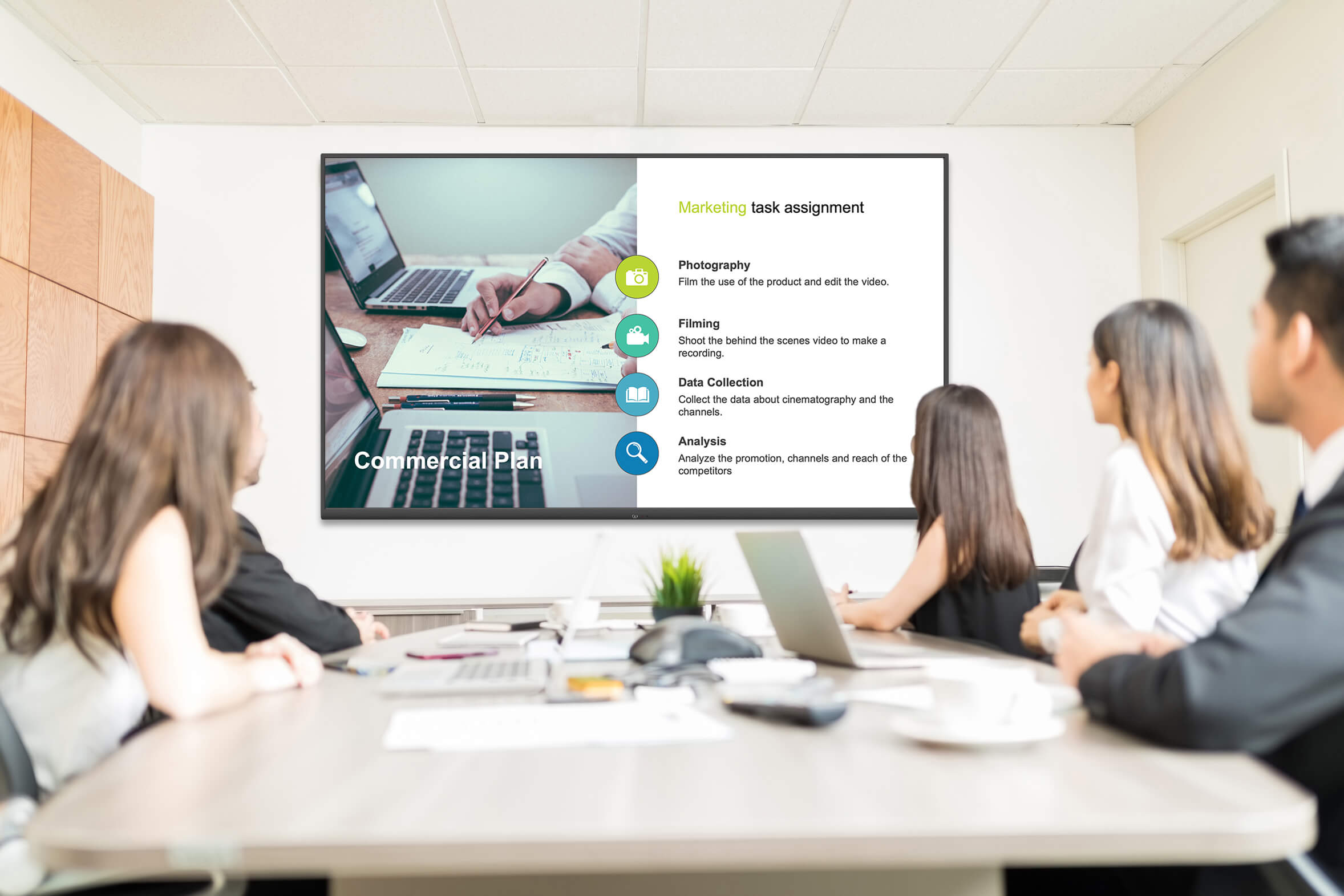
A brilliant large-scale display
The NT Series display is available in 85” and 98” sizes, making it a perfect solution for large-scale presentations, lessons and all-around collaboration. Its slim frame design is reminiscent of a modern painting frame, giving the display a sophisticated and elegant feel. The NT Series is an ideal upgrade for outdated whiteboard and projector setups. Stunning 4K resolution and Wide Color Gamut bring vivid, high-quality images to every seat in the room. For frequent usage, the blue light filter of the NT Series protects eyesight and ensures more comfortable viewing.
Powerful software solutions already built in
Newline Cast provides the NT Series with embedded wireless casting, meaning personal devices can easily be projected onto the big screen wirelessly for seamless collaboration and smooth presentations. With Newline Cast, presenters no longer have to worry about cables or walking up to the display. Freely cast content from your personal device onto the NT Series, no matter where you sit in the room.
Also built into the NT Series is Newline Broadcast, which enables the display screen to be broadcasted in real-time to any participant connected. Attendees can view the content right on their personal devices for maximum convenience, getting a clear look at every detail presented even from the furthest seat in the back.
Collaborative connectivity for all
To enhance collaborative features, the NT Series comes with direct cloud access and file management. Users can manage files from the cloud directly on the display through Google Drive, DropBox, Box, OneDrive, and Amazon Cloud Drive. Have secure access to all your important documents right on the NT Series even if you forget to bring your laptop along. Files can be viewed and shared through the display with a USB drive.
The NT Series also features a built-in microphone array to enable voice control and conference calls. To top it all off, Newline Display Management is also embedded, allowing you to manage your NT Series display from the comfort of your desk.
The debut of the NT Series proves that Newline is committed to providing innovative collaboration solutions that respond to the changing needs of the market. Newline offers a wide selection of collaborative solutions to help you upgrade your workspace and enable your teams to work better.
01 Jan 2023
How To Keep Your Business Going In The Challenging Times Of Restrictions And Travel Bans
The impact of travel bans and locked down areas is completely elusive. It deeply effects the global economy and our daily lives both personal and professional.
From a business perspective, meeting your business relations in real life is in most cases impossible at this moment. Many meetings are cancelled and securing the continuity of your business is challenging. Working from home, remote meetings, remote collaboration and keeping the human connection via Video Conference now becomes more important than ever before.
We Newliners are lucky. All our company employees have the advantage to work with our own products. As we have an amazing range of interactive displays for remote collaboration and reliable video conferencing, we can stay connected and continue working almost like normal. Staying connected to our partners all over the world is super easy.
Having the opportunity to work with our products on a daily basis makes all Newliners experts on our Newline products. This way, all of our colleagues take part in the continuous process of R & D at Newline.
Newline is proud to be able to contribute to the continuity of businesses around the globe, to keep humans connected and deal with these challenging times.
Interested to learn how Newline’s UC solutions can help to keep your business going? Click here to book a VC meeting with a consultant in your region. Take care and let’s stay connected!
01 Jan 2023
Newline Enhances Distance Learning
No need for classes to cancel. Distance learning brings your lessons right to your students no matter where they are. Educators who utilize distance learning find creative ways through the use of technology to continue teaching students productively and keeping them engaged in class.

All they need is a device that lets them access videoconferencing software to connect their students.
Keep your classes going without a hitch with Newline
Online and distance learning makes it easier than ever to keep students and faculty safe without sacrificing learning. Keep your students on track with their coursework from the safety and comfort of your homes.
Newline is here to help you transition from in-person instruction to distance learning so that you and your students don’t miss a beat!
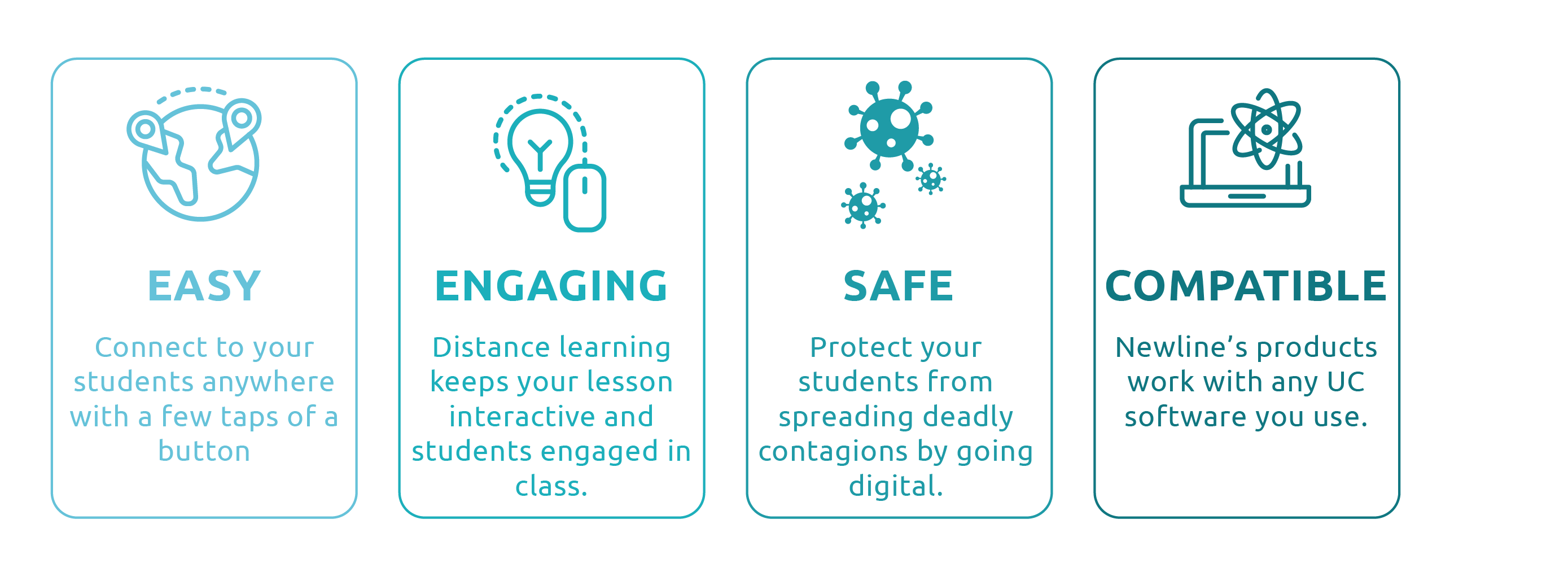
Compatible with all your favorite video software
None of Newline’s displays require you to use a specific videoconferencing software. Have the freedom to use the software of your choice – connect with students using Zoom, Skype, Microsoft Teams, WebEx, and more!
01 Jan 2023
Find out how interactive displays are driving telework
Did you know that telework is a form of performing work, using information technology, in the context of an employment relationship, where work is carried out away from the employer’s premises, on a regular basis? This kind of work is increasingly present in public and private organizations around the world. Cost savings, ease of reconciliation, less travel time, and reduction of pollution generated by means of transport are some of the advantages of teleworking.
For employees to be able to carry out their work from anywhere need a computer and Internet access. If all the members of the team have these tools, the work can be done in a dynamic and collaborative way as it would be done from the office.
There is no better computer model for teleworking but without a doubt interactive monitors add to the advantages of corporations over traditional models. This is due to the fact that besides allowing Internet access, videoconferences, and the usual programs, it also offers the possibility of sharing screens, making notes on documents, sending information with the modifications applied to such different contents as texts or videos, etc.
By incorporating interactive screens, corporations can opt for teleworking by ensuring permanent collaboration between those in the office and those who connect remotely. The information will flow naturally allowing everyone involved to be on the same page, continue or undertake team tasks and achieve the expected results.
Newline has a wide range of interactive screens, not only for the professional environment, but also for educational centers. If you want to know what they are and what features and advantages each model offers, do not hesitate to take a look at the website.
01 Jan 2023
Benefits of video conferencing, welcome to the New Norm
There is no doubt that COVID-19 has caused new technologies to be your perfect ally during this stage of confinement. While we have experienced a forced shutdown from the outside, the digital world has become even more important to us. Companies, education establishments, and society continue routinely thanks to the adoption of technological resources: Internet, computers, software, cloud services & videoconferencing tools.
During these months, professionals, teachers and students have been forced to change their daily routine. Videoconference’s are one of the most popular resources these days & thanks to them we can continue working, learning and communicating, without causing risk due to our social activities.
There are many tools to connect through a touch screen, and they all offer benefits that should be considered:
- Cost reduction – The travel expenses are reduced for the employees & the corporation.
- Anytime, anywhere – You only need a screen with Internet access to connect. Videoconference’s make the workday more flexible and can complement family life.
- Avoid contact – Replacing physical meetings with virtual ones allows you to preserve the health of those involved by dispensing with mass meetings.
- Saves time – During confinement many have noticed that meetings by videoconference are more efficient. Waiting time for attendees is reduced and topics are dealt with more directly. They serve for much more than just holding meetings, as they encourage the creation of collaborative digital spaces where people can interact, share ideas, documents, make notes in real time & hold simultaneous conversations.
- For professionals and students – Videoconferencing goes beyond the business environment, whether public or private. In addition to the advantages of incorporating it into the work dynamic of any organization, this resource also stands out in education establishments.
The “new normal” will encompass smaller face-to-face meetings to avoid unnecessary travels and allow connection remotely with participants that are in different offices or meeting rooms.
01 Jan 2023
Why can an interactive display help education now more than ever?
We are going through very uncertain times lately and we do not know what is going to happen in the short, mid, or long term. What we can be sure about is that our lives, and subsequently, education, have changed forever.
Every day we see information in the news that makes us reconsider the situation and look for new solutions to cope with the present situation in the best way possible, widely speaking. Regarding education, the majority of the most evolved societies, have been forced to adapt the way they deliver lessons, either because of the introduction of new ways of working that we did not need to consider up to this date, but also because of the need to create suitable content whilst delivering student communication in new ways.
The situation in each country differs, but also within each country different realities coexist, which is why we cannot generalize about what is going to be the “new norm” in education. At the moment, there are countries/educational institutions that are trying to come back to classrooms almost the same way they did before the pandemic, others that aspire to be able to combine distance with face-to-face learning, and others that will opt for just distance learning in the short to midterm.
So, the three scenarios that most frequently will be found appear to be:
- Face-to-face education: either the number of students per classroom is the same or it is reduced by an increase of the number of classrooms, teacher shifts, and/or teachers, it is necessary to ensure the necessary distance between them, and with the teacher. The capability to interact from each desk with the rest of the attendees is key, to guarantee a secure distance and minimize the risk of contamination. An interactive display can help to ease interactivity between teacher and students, with the content sharing from the main device (interactive display) to the students and vice versa. Frequent cleaning of the displays and stylus is a must. Newline interactive displays work with a regular passive stylus, so… why not provide each of the students with one of them?
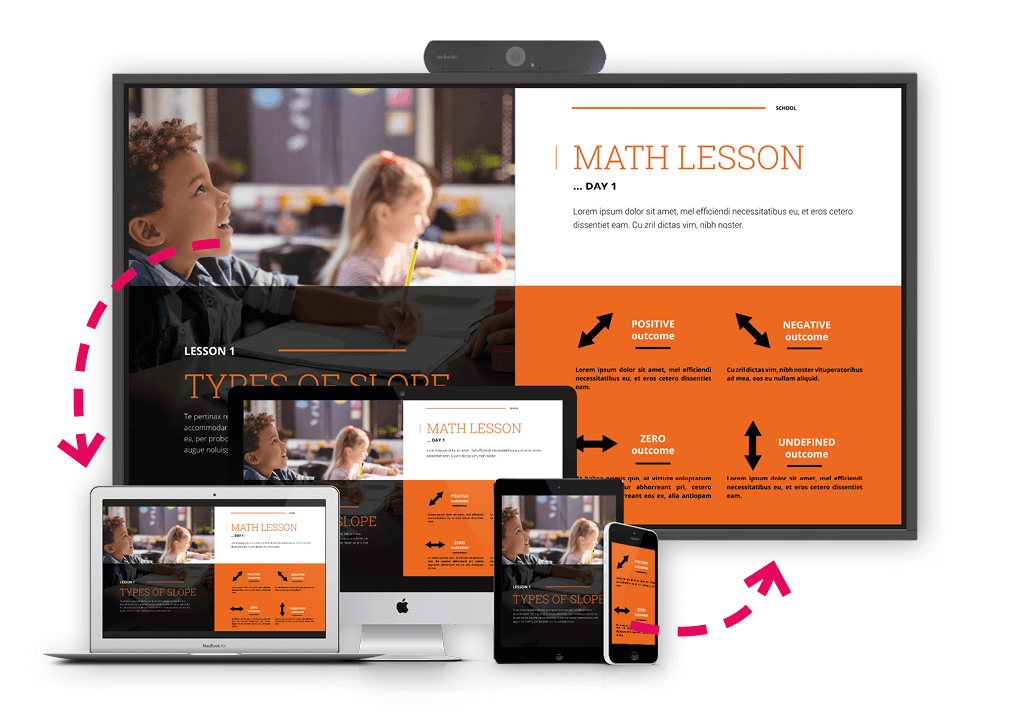
- Blended learning: or face-to-face education for some of the students, and distance learning for the others, alternating groups to attend school, so the number of students simultaneously in the same space decreases but they still attend the lessons “together”. It will be necessary to share the content with the students’ devices regardless of whether they are physically present (as we mentioned in the previous scenario) or remotely present and to connect the home working students by videoconference, with the tools of each school´s choice. An external camera to record the teacher interacting with the interactive display during the lesson is key to catch the student’s attention. The engagement of sharing content remotely with the students increases when the teacher is being seen interacting, writing, drawing, etc. as they do in face-to-face lessons. In the case of an additional webcam embedded in the display, it can face the classroom-based students if necessary.
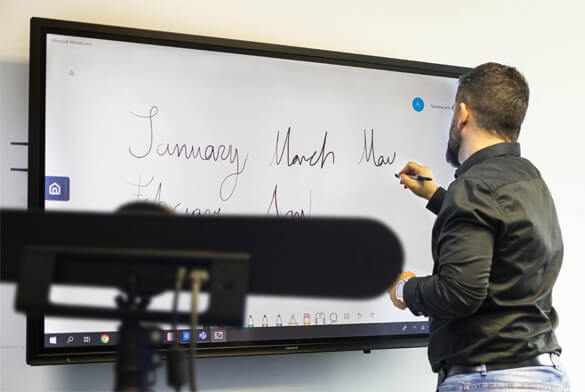
- Distance learning: many organizations are opting for these kinds of lectures like the prestigious Cambridge University just announced. But as some researchers reveal, the lack of face-to-face lessons may cause the students to lose interest. In order to make online lectures similar to face-to-face lectures, the recommendation is to share the content and to make the videoconference using an external camera pointing to and capturing the teacher interacting with the display during the lesson, as mentioned in the previous scenario. The engagement of the attendees will be significantly increased. Why not record the lessons performed in a natural way, to provide the additional advantage of reviewing them afterward?
The future is difficult to predict, but what seems to be clear is that the change to interactive lessons is a must, the digital content is needed now, more than ever. Having the necessary tools to interact with the students will make a difference. The technological leap is here, and at Newline we can help any organization make it safely and easily. The Newline interactive displays are compatible with any educational software tool and any videoconference application, and they interact in a very intuitive way with any other device. Our society has completely changed. We have to make the most of it now. Newline can help you deliver online lessons!
01 Jan 2023
Adapting Desktop Collaboration Devices to the Modern Remote Teaching Environment
By now, it’s widely accepted that technology is needed in the classroom to enhance student learning. However, how much is it helping teachers be more productive, effective, and innovative?
Teachers need a technology companion in the classroom that is more portable, intuitive, and adaptable than previous classroom technology. The perfect complement to the interactive large format display, desktop collaboration devices translate well into the teacher meeting space and remote teaching environments.
In this article, we will discuss the ways in which an interactive desktop monitor frees the teacher from the classroom while maintaining effective and engaging lessons.
What is a Desktop Collaboration Device?
Desktop collaboration devices are all-in-one communication monitors (about 23” to 28” screens) that streamline all the components needed for video calls and whiteboard collaboration. Typically, an integrated microphone and speakers come with the device, but many newer models include a camera as well.
Videoconferencing software will either be integrated into the operating system, like with the DTEN Me and Zoom, or provide compatibility with all videoconferencing software, like Newline Flex.
Some of the best desktop collaboration devices have touch technology that allows the user to annotate directly on the screen with a finger or stylus/active pen. The touch technology ranges widely in key features like object recognition, touch sensitivity, and pressure sensitivity. The more advanced the features, the more intuitive the writing experience.
This new device type opens possibilities for remote teaching because it frees the teacher from the classroom board, desk, and even the room itself. Video sessions can start instantly and be controlled by the touchscreen device. It can also serve as the complete solution for teaching from home with as little as two connected devices.
Beyond the Digital Whiteboard
Studies and reports have shown that the addition of the “digital whiteboard” or large-format interactive display increases student learning in the classroom. The interactive/collaborative component engages the students at a deeper level and knowledge retention increases by over 30% compared to analog lesson delivery. Additionally, teachers have easier access to online learning tools and lesson content thanks to the large screen that connects to the internet and can be seen by the entire classroom.
Now that this has become an industry standard, “ease-of-use” and adaptability for the teacher takes the mainstage. Classroom technology is no longer a complement to everyday lessons, but now an integral part of lesson creation and delivery. The tools that teachers must interact with daily should fit their teaching style and give them the same, if not more, flexibility to do their work as analog teaching does.
This is where the limitations of the classroom learning ecosystem break down. Analog and digital tools alike are less effective and more cumbersome in a remote teaching environment. Since the transition to hybrid and remote learning began, the classroom setup introduced more required technology and a renewed learning curve just to keep lessons flowing.
Desktop collaboration devices bridge the gap for teachers who need a streamlined technology solution in a hybrid/remote environment.
Flexibility to Conquer Remote Teaching
The first aspect of in-person teaching to change was the need to stand at the board in front of the room. Whether the teacher preferred to sit at a desk, walk around, or stand stationary at the board; like a magnet, the board drew the teacher back to the front of the room to illustrate points or write down key items of the lesson.
With an all-in-one touch monitor, such as the Newline Flex, the teacher can bring “the board” with them. If the environment is hybrid, the teacher can sit/stand in front of the Flex camera for the remote students and still easily engage with the students in person. A fully remote class can also stay engaged while the teacher uses one device to start a video session and present the lesson on a touch screen. Note, with a portable desktop collaboration device, the teacher can be remote as well.
Simply put, desktop collaboration devices help maintain interactivity within each lesson regardless of the teacher’s location. This is a game-changer for teachers who must work from home or manage a group of students who are in multiple locations.
Desktop collaboration devices bridge the gap for teachers who need a streamlined technology solution in a hybrid/remote environment.
Reduce Technology Clutter
Most classroom technology ecosystems require three devices at a minimum: interactive display, teacher’s personal device (i.e. laptop), and camera. This does not include a potential external microphone, keyboard, additional teaching devices such as an iPad, and all the connecting cables. This can become a problem for teachers who are not comfortable with managing so many devices and the inevitable troubleshooting when things don’t quite connect.
Having a desktop collaboration device streamlines all these devices into one for the teacher. Additionally, it is portable and flexible to the teacher’s needs. Different from a desktop computer, this device can easily be transported from school to remote locations just like a laptop. Plus, the extra cables and peripheral devices are totally taken out of the equation.
Instantly, teachers feel less pressure to operate as their own IT support staff when it comes to connecting devices, starting class, and sharing content online with students. Everything is integrated into one device effectively eliminating much of the troubleshooting needed for multiple devices in the remote learning environment.
This device does not replace the teacher’s laptop and there is no need for it to be replaced. This is a manageable upgrade to the laptop experience by providing quality video, audio, and touch capability to a device with already built-in computing power, preferred apps, and security software.
Easily Start Lessons without the Hassle
With more and more classes taking place online, connecting peripheral devices for video sessions are more important. However, time and time again, cameras disconnect, microphone settings change, and the list goes on. The advantage of having a desktop collaboration device is that all these hardware pieces are integrated. This frees up time and hassle at the beginning of class to get straight to the lesson. Not to mention, this makes transport from space to space more feasible with as little as two devices.
Emulate Classroom Teaching Methods
As technology evolves, so does the capacity to naturally interact. Devices are less of a barrier and more of an open door to easy communication. The desktop collaboration device mimics traditional teaching styles in the most crucial ways. Teachers can use the integrated whiteboard to handwrite lesson content. With devices like the Newline Flex, an active pen makes the writing experience more natural and the tilt feature lowers the screen for more comfortable handwriting. Making annotations is another feature that allows teachers to better illustrate points on pre-existing lesson documents and handle paperwork digitally while away from the school.
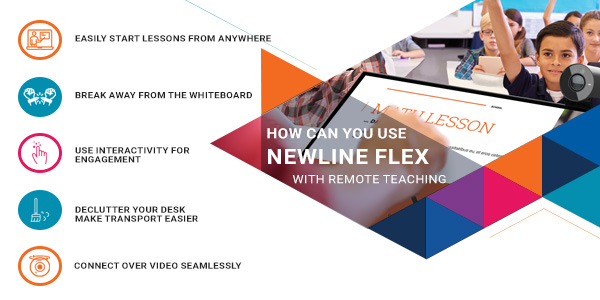
About the Newline Flex
Newline Flex is a revolutionary 27″ all-in-one interactive desktop collaboration device. It comes equipped with a 4K screen, attached 4K camera, built-in microphone array, integrated speakers, and an active pen. All these features and components are what teachers need to get started with an interactive lesson!
The Newline Flex can be connected to your own device such as a laptop to work with the programs, apps, and browsers that teachers normally use and are familiar with. The learning curve is drastically decreased since the device is non-proprietary. That means it works with any software or hardware already in use if it can be connected. The Flex comes with a powered USB-C connection that enables touch capability and “touchback”—which means the original device (laptop) mirrors anything the user does on the touchscreen. There is also USB and HDMI connectivity on the Flex.
Other key features of the Flex include the compatibility with all videoconferencing apps such as Zoom, Google Classroom, Webex, and more. Teachers can also enjoy the intuitive writing experience with digital whiteboards and annotation software.
Newline Flex is meant to adapt to the needs of the users, especially teachers who need a more flexible teaching environment. Learn more on the Newline website. Flex is the latest hardware addition to Newline’s products, complementing the large format displays perfect for classroom teaching with interactivity, collaboration tools, and more built-in. Check those out here.
01 Jan 2023
4 Reasons to Love Newline Products
It’s the month of love but we’re talking about more than relationships. Isn’t it time that you fall in love with your workplace productivity devices? Whether you work from home or the office, Newline products are worthy of your affection. In return, you will feel empowered to connect to the world, create your best work, and collaborate with your team.
Here’s a look at five reasons why you should love Newline products and what they can do for your daily productivity.
Love That It’s Non-Committal (Non-Proprietary)
Firstly, all Newline displays are non-proprietary. In other words, you can use any software of your choosing without being locked into Newline software options only. Why is this such a big deal?
Think back to the last time you purchased a new smartphone, and more specifically, when that phone wasn’t the same brand of the device you were replacing. Are you cringing as much as we are? That transfer process was so difficult because you had to manually transfer all of your data and potentially delete or abandon apps and files that weren’t supported on the new device.
With Newline, all of the apps, files, and software that you were familiar with on your desktop, laptop, and former displays are compatible with the Newline display. There’s no more worrying about how much the product will uproot your current workflow.
Love That It’s Not Picky (Multiple Connections)
Having options is never a bad thing, and with so many large format display companies to choose from, you want the most compatible match. Go with the one that isn’t picky about connectivity! Newline displays offer a plethora of connectivity options based on the device you have.
Some of our product series, such as the RS+ Series, even have inputs on the front for easy access. Bring your laptop to a meeting and quickly connect in seconds. Having a product that is not picky when it comes to connectivity expands your options for peripheral accessory integration and prolonged future use.
This is important for team meetings and conference spaces where people from different departments and companies will bring their own devices to connect.
Love That It Recognizes You (Object Recognition)
Teamwork and collaboration are key in your daily work, and having an interactive display that truly supports that is crucial. Share the screen (at your discretion) with teammates to make annotations and markups without worry. Newline displays have object recognition that allows you to easily write with various writing utensils at once and use gestures (like your fist) to erase. It’s like Newline finishing your sentences…soulmates!
Object recognition makes a bigger impact than you may think. The flawless writing experience saves time and frustration from learning how to best interact with the display. This natural and easy-to-use device simply complements the great work you’re already doing at your company.
Love That It Comes with Benefits (Free Software, Support & Training)
We know that you may not fall in love with Newline this year, but at least keep the products in the running for “friends with benefits”. Newline products come with free software, support, and training to help you succeed. Who wouldn’t want those benefits?
Newline Cast and Newline Broadcast give you and your team additional options to share your screen. Cast wirelessly projects someone’s smaller screen like a laptop, phone, or tablet, while Broadcast shares the display screen to everyone else’s devices. These are great tools to leverage for remote teams and big rooms where people can’t easily see or access one shared device.
Newline Launch Control is perfect for the office environment that regularly hosts meetings in a space with a Newline display. Easily login, change settings and launch a meeting with 1-click. Save the awkward meeting startup by avoiding the cumbersome steps using Launch Control.
Newline Display Management Plus is a secure and remote portal for IT administrators to manage all the displays on their network. Admins can easily push updates, alerts, track, and change settings from one web portal for multiple displays.
Lastly, on top of all these benefits, Newline displays owners have the option to schedule free training sessions and request support from REAL technical support staff at no additional charge. It’s basically the cherry on top of this friendship sundae.
Join the 2 Million Users That Love Newline
Newline is loved by 2 million US users across businesses and schools because the products help them better create and collaborate with one another. Discover for yourself why Newline has the easiest-to-use products in the interactive flat panel market.
Ready to learn more? Schedule a demo with one of our team members.
01 Jan 2023
NT Series Updates – March 2021
Product updates and improvements are important to us at Newline Interactive. We listen to and understand the needs of our customers. With our unique business model, we can gather feedback and act on product updates faster than our competition. Recently, we rolled out some new updates to the NT Series. Users can now enjoy easier navigation and a more customized home screen experience. Read on for an overview of the highlights and most exciting advancements.
Home Screen & Menu Updates
The homepage menu has been updated to meet the requests from our customers! Users can now turn off the auto menu pop-up on the home screen (found in Home settings). This comes as an addition to the source autodetection setting which allows a complete bypass of the home screen to the OPS computer or connected device. And another highly requested feature, home screen wallpapers can finally be customized!
Sleep mode settings received a nice upgrade as well. There is now an Auto-Schedule On and Off option in the display settings. Sleep mode can be customized to simply put the display in hibernation mode or a complete power down. This is a great feature for organizations wanting to regulate power consumption, but still take advantage of the 24/7 rated commercial display.
Remote Updates
We understand that the previous NT Series remote was a bit hard to navigate some of the essential functions on your NT Series, so we’ve created an upgrade! The new, sleek remote has two pieces and is double-sided with a keyboard. The second piece is the RF tech-supported Wifi dongle that connects the remote keyboard to your NT display.
When unpacking the NT accessories for the first time, the Wifi dongle will be nestled under the battery slot on the right side of the remote keyboard side.
You’ll love the new integrated air mouse on the remote that works via the Wifi dongle on the Android and Windows settings and apps. That includes pre-installed apps such as Newline Cast and Broadcast and all your favorite PC apps on the OPS computer or connected laptop. New remotes have mouse mode, right-click, and left-click buttons. Just like a Bluetooth-connected keyboard and mouse, your included NT Series remote will help you seamlessly navigate the display.
Pro Tip: Plug the remote Wifi dongle into the USB port on the bottom right of your NT display for uninterrupted use and connectivity. This will leave all your left-side ports available for other connections.
Wifi Module
Each NT Series display comes with a fully modular Wifi adapter. For flexible installation options, it does not come pre-installed. The included Wifi module has three antennas, providing a strong connection for all your NT displays.
Getting the Update/Remote
If you’re already an NT Series owner, double-check that you are working on the latest firmware to take advantage of these great new features. We are now up to version 2.0.44 and you can double-check that in your device settings. If you need assistance in updating the firmware, simply contact Newline Tech Support.
For our customers with an old version of the NT remote and would like to upgrade, a simple request is all you need! Contact your Regional Sales Manager to assist you with getting this ordered. Don’t know who your manager is? Complete this form here.
Why Update NT Series Firmware to 2.0.44
This NT Series update allows easier navigation, seamless workflow, and overall usability. And with the included (FREE) remote control, we’re basically giving you a free mouse and keyboard for every display.
- Customizable home screen and logo option
- Power consumption management with auto schedule
- Complete navigation control: upgraded remote with mini keyboard and air mouse compatible with Android OS and Windows
- Modular Wifi adapter for strong connectivity
- Easy to install (OTA) firmware
- Swappable remote for established customers
Other NT Series Favorites
Newline’s NT Series gives you the power to host impeccable presentations, launch productive meetings, and display captivating standby graphics on a commercial-grade display. Leverage the 6-mic array for video conference meetings with your own camera or connected device. With its 24/7 power rating, this non-touch display works as hard as you do. Learn more about the NT Series here.
01 Jan 2023
Understanding USB Type-C and Your Newline Flex
USB connectivity has seen rapid advancements over the years. It can be confusing when determining what your devices can actually do with this connectivity. This post is meant to share some of the basics around USB Type-C, what’s supported on Newline Flex (spoiler: everything), and how to check your device for compatibility. If you are looking for a slightly more technical explanation, read this article from our friends at B&H.
Not All USB Type-C Is Made Equally
You will find various types of USB Type-C but the actual functionality of the ports and cables vary. All the connectors include data transfer (at different speeds) and/or power (at varying wattages), and selectively audio, video, and touch. You can most easily determine the compatibility type on your device with one of these icons near the port:
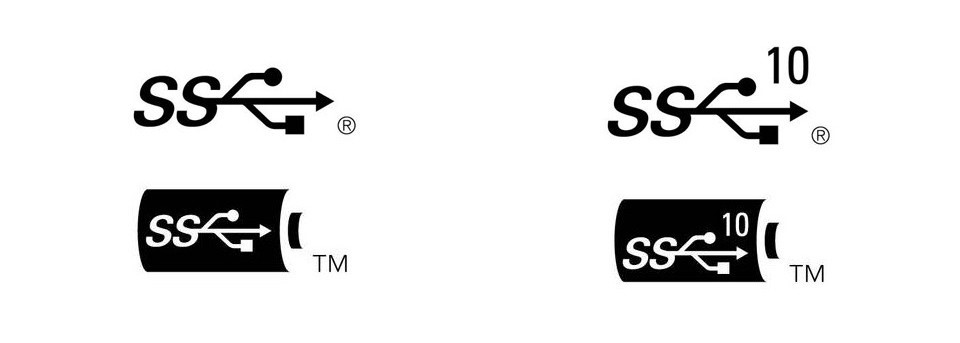
With Thunderbolt, devices have full compatibility with speedy data transfer, audio, video, touch, and power delivery. This connectivity is found on all Apple laptops and Dell has standardized their later models with thunderbolt connectivity. More and more manufacturers are starting to adopt Thunderbolt connectivity. You will see a single thunderbolt icon on devices that have this connection.
Not all devices will have an easy-to-read icon near their port to indicate the level of USB Type-C connectivity. Be sure to check your device settings for a clear understanding of its capabilities and Newline Flex compatibility.
Across all levels of USB Type-C, you’ll see differences, so know what you’re getting when you purchase your cables and devices. For example, chargers have different amounts of power outputs, and the same is true for data transfer speeds.
Flex Supports All USB Type-C Capabilities
Newline Flex is a 27” desktop touch monitor with full touchback, an integrated camera and mic array, and 2.1 channel speakers. It lends itself to easy video conferencing, digital whiteboarding, document signing, annotating, and more. Its easy plug-and-play design via USB Type-C makes it compatible with numerous devices.
Flex supports all USB-C connection types, but the functionality you receive is dependent upon your non-Flex device. Flex supports data transfer, audio, video, touch, and power delivery with the appropriate connections.
The great thing about integrating Flex into your workflow is the backward compatibility. Despite the potential limitations of your connected device, Newline will be able to work with those capabilities. So, it’s important to double-check your device settings to get a clear understanding of what those are and if it aligns with your intentions for the Flex.
The optimal connection for Flex is Thunderbolt as it supports the data transfer, video, audio, touch, and power delivery we’ve been talking about. With this on your device, you will enjoy all the features Flex has to offer:
- Display mirroring (or extending) to your Flex screen for ease of use and improved workflow.
- Full audio and video playback on your Flex display and 2.1 channel forward-facing, integrated speakers.
- Full touchback, an industry first, that allows you to control your laptop’s display via P-CAP touch on the Flex.
- Up to 60W of power back to your device with the provided cable. You can work on your Flex while simultaneously charging your laptop with just one cable.
Check Your Devices
Reference this handy chart, which is also included in the Flex Quick Start Guide, to verify what your device can perform with the Newline Flex.
01 Jan 2023
Spring Cleaning with the Flex
Spring is here: guaranteeing blooming plants, abundant rain, and a refreshing newness. This change in season ushers in the annual spring-cleaning frenzy too!
Take your spring cleaning to the next level with the Newline Flex. Well-worn home offices and business offices alike deserve a refresh. Flex will help you cut the clutter and complicated workflows. Read on for simple steps in organizing your workspace with this new digital tool.
 | Newline Flex is an all-in-one touch desktop monitor. It includes a 4K display, integrated camera, 8-mic array, 2.1 channel speakers, an active pen, and touch. It fulfills all your desktop technology needs to get your work done. Navigate video calls and host collaboration sessions without missing a beat. These features streamline the way you work, remotely and at the office. But have you thought about the benefits for your workspace visually? |
Connectivity and Control
First, put away all your device cables except two. You will only need the provided USB Type-C and power cables for your Flex. Connect your Flex with the power cable. Then, connect it to your laptop via USB-C. These are the only cables and devices you need for full touchback, charging and video calls.
If your device does not have USB-C connectivity, no worries! You can still use the USB 3.0 or HDMI 2.0 connectors to use the Flex as an extended screen. The only extra cable needed is your charger for the laptop. To learn more details about connectivity, read this post.
Flex pairs down the number of cables needed to transfer data from one device to the next. Plus, with full touchback, you will have complete control of the laptop’s content. This is great for live annotations and casting your screen. Think of all the time saved and mental energy conserved with this workflow. Tasks limited by the mouse and keyboard are liberated with easy touch technology. Use one device to write on like a tablet, start up a meeting without added setup, and utilize all your desktop apps.
Cut the Peripherals
Next, put away your webcam, external mic, external speakers, document camera, and headphones. Replace these with high-quality hardware already integrated into the Flex. You will love the high-fidelity speakers and subwoofer paired with an 8-element mic array. Colleagues will appreciate the clear audio in meetings. You will appreciate less effort need to make a great impression.
With all this extra space, you can focus on the work at hand instead of the logistics of it all!
Cable Management
Now that we’ve established all necessary devices, it’s time for cable management. This is crucial in establishing an organized desk space when spring cleaning. Weave all your cables through the open slit on the Flex kickstand. Gather the cords behind the desk and zip tie as needed. Just like that, your space is expertly organized, aesthetically pleasing, and trip hazard-free.
Streamline Your Work
Now that you have streamlined your devices, your desk should be a lot less cluttered. What else can you do to optimize your spring cleaning?
- Tossing old papers
- File important documents
- Place office supplies in organizers
- Dust/sanitize all surfaces
Thanks to Flex, you can use your two devices for all aspects of work. With a clear desk and fresh mind, everyday tasks are now a breeze.
- Start video calls
- Annotate spreadsheet data
- Sign documents
- Use the whiteboard
- …and more!
Are you ready to join the Flex Gen? Order your own Newline Flex today and streamline your work this spring clean season.
01 Jan 2023
The Hyflex Course Model with Newline
Newline manufactures and sells collaborative interactive products for higher education. These products lessen the burden on higher education faculty to learn new tools while implementing synchronous and asynchronous learning with the Hyflex Course Model.
What is the Hyflex Course Model?
Introduced by Brian Beatty at the San Francisco State University, Hyflex is a course model developed for higher education that brings flexibility to the student experience. Students may choose to join class remotely or in-person with the expectation of receiving equitable instruction in both formats.
Classes are streamed live and can be recorded for later playback. Students can then choose whether to show up for the class in person or to join it online for each and every class meeting. Faculty may also benefit from this alternative course model. If the instructor is the one who must join the class meeting remotely (or shift between face-to-face and remote teaching as public health and personal circumstances change) the course infrastructure is already in place. It’s important to note that the goal of HyFlex is two make both the online and in-person experiences equal.
Basic Technology Requirements
High-Quality Camera & Mic
A good camera & mic are imperative in this course model. Students who are joining the class remotely should feel like they are a part of the conversation equally and this is achieved with the best visual and audio from the classroom. Newline offers quality camera & mic combo products to meet this need.
Videoconference UC Client
This is the primary platform that will integrate virtual instruction into the physical lecture space. Selecting a provider and plan that will support the appropriate number of participants, time allotment, session controls, and recording capabilities should be considered. Newline’s displays and desktop monitor integrate with all UC clients.
Virtual Engagement Platform
The crux of the Hyflex model plan lies within student engagement. Students are the key to the success of this course structure as it relates to consistent discussion and input throughout each class meeting. Providing an appropriate outlet, such as videoconference chat functions, allow for this engagement. Newline products support this feature.
The Newline Advantage
Newline takes the headache out of the deceivingly complex technology side of this process. Non-proprietary, easy-to-use panels integrate with any software faculty choose to use. The training and onboarding time is also shortened for all staff since our products (hardware and software) are intuitive and touch-enabled. Newline supports faculty and students alike with quality and easy-to-use technology that enhances the learning experience and ensures that students learning synchronously and asynchronously are both delivered the best content.
Leverage Newline Tech, Focus on Pedagogy & Structure
Institutions must organize various logistical aspects of this model in order to effectively deliver synchronous and asynchronous lessons:
- Overall course design
- Pedagogy centered around student-led engagement
- IT support team for technological execution
- Learning designers/classroom technology professionals to support faculty in virtual student engagement
- The technology
Newline’s Solutions: Meeting the Needs of the Hyflex Course Model
Interactivity & Engagement
With RS+ Series panels, faculty and students have a 4K display, clear speakers, Android-based OS, and touch technology to engage with the content on screen. With Newline Broadcast, the lecturer, or a moderator, may project the presenter screen to all of the student’s individual devices for equitable access to all. If faculty have the content on their personal devices, Newline Cast allows it to be projected on the large display for sharing and annotating. Students and classroom technology professionals can also share their screens, no matter their location. The X Series provides this same great experience, plus two integrated HD cameras and an on-board PC computer for more robust functionality.
For courses and campuses where network security is a top priority, our IP Series is a better fit. Still outfitted with touch technology, the IP is a great option for digital lesson delivery. Paired with an optional OPS on-board computer, the IP Series can deliver all the same Windows 10 PC functionality.
Lastly, if a great picture and audio are all you need but no touch technology—the NT Series is your go-to display. With exceptionally integrated speakers and mic, the Hyflex Model can still be delivered with the best quality to students.
Remote Teachers
Faculty do not have to lose interactivity or presentation quality when teaching remotely. Newline Flex is a touch desktop collaboration monitor that is simply ‘plug-and-play’ with a laptop. Faculty instantly have touch capability, Newline Cast options to the classroom display, and superb videoconferencing technology. An integrated 4K camera with tilt, quality 8-mic array, and 2.1 channel speakers eliminates any technical limitations for the instructor to deliver a great lesson. Remote and in-person students will see and hear clearly. They will also have the option to view live annotations on the screen with ease.
Multitasking & Management
Not only does the OPS on-board computer add PC functionality to any display, but it frees up personal devices for additional class management. Since student engagement and virtual chat functionality are important in the Hyflex Model, an OPS is a perfect integration for multitasking. The virtual chat can be displayed live during the class meeting on the display while the instructor broadcasts their laptop content. The reverse is also feasible, where the display is used to deliver the broader lesson and all participants view the virtual discussion from personal devices. Newline’s flexible product design accommodates the structure set by the faculty and staff.
World-Class Support
When relying on interactive technology for the hyflex course model, support and training are just as crucial in ensuring success. Thankfully, Newline provides world-class training and support at no additional cost to Newline customers. Training includes in-person, virtual, and on-demand options for end-users looking to get up to speed with their Newline displays.
Additionally, tech support is available by phone, email, and our website. Prompt response times and on-demand resources are also always available on our Online Knowledgebase.
01 Jan 2023
Improving Company Culture with Technology Integration
“Company culture” is THE most important aspect to candidates I meet, but what does that mean? Culture is how the company functions, how employees behave, and the atmosphere. But what is a “good” culture?
Good culture means that the company is functioning like a well-oiled machine. It also means that all team members are being respectful, with a great attitude, and a positive work ethic. The atmosphere is one of urgency, timeliness, and organizational effectiveness. When these qualities are present, it makes for a fun and team-oriented environment!
It can be extremely difficult to find a company with a truly amazing culture. There are many companies that may put on a front but are entirely different once you join. If you’re looking to improve your company’s culture, technology is a quick and effective solution.
Improving communication is the #1 way to improve culture and a way to achieve that is with interactive technology. Newline displays can assist in reviewing documents, brainstorming, and virtual meetings. With tech assistance, synchronous and asynchronous collaboration can take place. Touch and accessories such as the stylus also allow hands-on collaboration that is “more flexible and versatile than a mouse and keyboard,” according to Tim Garber, Newline’s Technical Trainer.
By integrating interactive technology, you improve efficiency which can improve the company culture.
Communication
Communication improves with hands-on collaboration no matter location; in-person, phone call, video. Newline’s displays encourage team involvement and investment in projects or company goals. With the right tools, everyone is able to contribute which creates a positive work environment. People tend to contribute in various ways: auditory, visual, reading/writing, and kinesthetic.
Auditory
Auditory processing comes from listening to input, ideas, questions, and video audio. All Newline displays are virtual meeting-ready with built-in speakers. Easy software integration allows for people who work best by listening to revisit recorded meetings.
Visual
The visuals take in videos, images, and written content presented on the display. A clear 4K display, screencasting, and annotating contribute to this style. This helps visual people soak in the items in front of them.
Reading/Writing
Reading/writing processing types learn by doing just that. Viewing the display at any angle up to 178-degrees, employees have no problem with reading the 4k screen. Additionally, on-screen annotations and screencasting from personal devices give tons of writing options.
Kinesthetic
Kinesthetic processing happens through physical touch. The interactive display is perfect for this employee. They need access to the embedded whiteboard, annotation tools, and content sharing to engage in their work.
Newline’s interactive displays can enhance all processing/learning types. Not only does this promote an active office, but a happy one.
Collaboration
Collaboration is important, as it fosters new ideas and builds internal relationships. Newline’s displays enhance collaboration with fast content sharing, real-time editing, and hands-on problem-solving.
These features allow a group to collaborate efficiently compared to other methods like email or written reports. Fluid technology makes collaboration easy and frictionless for employees.
Efficiency
There is nothing worse than being in a meeting that could have been an email; we have all been there. Employees are happier and more productive when their time is best utilized. Technology, particularly interactivity, can help with meeting organization and timeliness.
Having the tools to exhibit and express ideas reduces meeting confusion. Teams save time with connecting devices, long discussions, and the list goes on. With efficient meetings, happy employees build overall team morale.
Morale
As we’ve discussed, technology integration builds morale in a few ways. There are more efficient meetings, collaboration, better communication, and more. Combined, employees then start to feel appreciated, productive and valued. Positive work culture is achieved!
Morale is the foundation of company culture. To build on it, you need to improve the above qualities in the organization. An investment in cutting-edge technology fast tracks an organization to high morale.
Core Newline Product Features for a Happy Work Culture

Non-Proprietary/Device Compatibility
No matter your office ecosystem, Newline’s displays work with any software. The non-proprietary design makes it easy to join video calls and work on any web application. Connected Android, Windows, Apple, and Chrome devices work as well. The options are limitless and scalable.
4K Display and Viewing Angles
Every Newline panel series has a 4K viewing display. That makes it easier to give vivid presentations and rely on a crisp visual experience. A clear viewing angle is achievable from almost any position in a small or large meeting room. Gone are the days of squinting from the back of the room or obstructed views from the sides.
Built-In Annotation Tools & Stylus
With a gesture, your Newline display can transform into the ultimate collaboration tool. Annotate over any screen and write with the built-in annotation tools. Newline displays come with advanced IR or P-CAP touch for seamless writing. With object recognition, writing is more intuitive and effortless.
Document Sharing
The collaboration doesn’t end at the panel, and neither does access to your notes. Document sharing is available through your Newline display. With quick access to the cloud service of your choice, send documents immediately.
01 Jan 2023
Everything You Need to Know About the Newline Classroom Tools
The Classroom Tools widget is active in the background until the teacher needs it. As an overlay, the teacher opens the tools menu even after navigating between screens. This cuts down transition time and the number of devices needed throughout the day such as a timer, stopwatch, and more!
Here’s a closer look at the nine tools on the Classroom Tools widget:
- Instructions: alert the students on how they should be completing their work (in groups, with a neighbor, or alone in silence) using image cues
- Traffic light: a simulated traffic light, manually switch between colors
- Dice: digital die or dice, perfect math manipulative for a quick demonstration
- Timer: our #1 requested tool, use it for tests and classroom activities
- Stopwatch: track and clock laps
- Calendar: easy access to a simple calendar
- Zoom in: emphasize something on the screen with the zoom-in option
- Spotlight: draw attention to a single point on the screen while blocking out the rest
- Curtain: add a special effect by unveiling the screen with curtains that open from the middle
Use any combination of these apps together and resize for convenience! When done, minimize the widget menu and drag the box to a corner of the screen until it’s needed again.
11 Apr 2019
How to Better Engage Your Employees in Your Meetings
The most effective and important meetings always include one vital element: engaged employees.
Your office is a team, and if your teammates are falling asleep in a meeting or not contributing to the conversation, your organization is not running as efficiently as possible.
So how do you keep your employees from becoming disengaged?
Assign team members meeting responsibilities.
Giving someone a job to do during a meeting is an almost immediate way to keep that individual member actively engaged in what is happening. Assign simple tasks for your team to assist you with, such as setting up the displays, bringing refreshments, being a timekeeper, or someone to help keep discussions from going too far off-track.
Talk less. Foster discussion more.
A lot of employees dislike meetings because they do not feel like they have a real voice in how their company proceeds. Help them feel like their input and thoughts are valued by spending less time talking. Once you’ve given the high points on a topic, instead of being the main person talking, try to foster discussion amongst your team. The more they talk, the more involved and engaged they will be in not just the outcome of the meeting, but following through once the meeting is over.
Let team members run parts of the meeting.
Another way to give your team members more engaging responsibilities is to surrender the lead on a discussion to them. Use the assets of your team. If someone in your office is a master of a subject related to your goals and tasks, give them a heads up and let them run that part of the meeting. They’ll have stronger answers to questions and it shows a level of trust in your team.
Request feedback after the meeting.
Every group of people works differently. Be sure to gather information and feedback about what your team members liked, or disliked, about a meeting. Ask them one on one, or ask for information using anonymous surveys. If your team all seems to be saying the same things, take their input and make adjustments to how your meeting flows.
25 Mar 2019
Newline Named Intel IoT Solutions Alliance 2019 Partner of the Year
Intel announced at the Intel Partner Connect event in Aurora, CO last week that it has named Newline Interactive, a leading supplier of interactive touch screens and innovative software that increases productivity and enables collaboration, as its 2019 Internet of Things Solutions Alliance Partner of the Year.
Newline was chosen as Intel’s America’s Market Ready Solution MVP for pushing several large-scale deployments of their TRUTOUCH X Series unified collaboration system, an all-in-one interactive display that utilizes built-in videoconferencing equipment and powerful Intel processors to provide more users with better collaboration in the workplace.
Intel Partner of the Year awards are bestowed upon partners in their Internet of Things Solutions Alliance program who have demonstrated an excellence in marketing, training, technology platform design, and integrated solutions sales.
“We are truly honored to receive this prestigious award from such a great technology partner,” said Chris Bradford, President of Newline Interactive. “I believe this award is proof positive that the partnership between Newline and Intel is meeting our goal of delivering world-class, market-ready IoT solutions to customers all over the globe. The large number of repeat deployments of the TRUTOUCH X Series is a great gauge of customer satisfaction with the solution.”
Beginning their partnership in 2018, Newline and Intel sought to bring an all-in-one solution that met the needs of an evolving market. As the demand for fast, efficient, and innovative collaboration grows, the TRUTOUCH X Series sees validation from the market that users want products that are powerful, utilize cutting-edge technology, and are designed for ease of use.
18 Mar 2019
Newline TRUTOUCH X series featured on Intel’s Market Ready Minute
The Newline TRUTOUCH X series was recently featured on the latest edition of Intel’s Market Ready Minute.
The TRUTOUCH X series is an all-in-one collaboration solution ready to make your meetings more efficient and productive. It combines an interactive multi-touch display with built-in videoconferencing equipment.
This all-in-one solution enables simplified collaboration and streamlines videoconferencing in any business.
Check out the video and find out why companies love the TRUTOUCH X series!
13 Dec 2018
10 Top Productivity Hacks
Not sure how to keep your office running as productive as possible? Try these ten tricks to keep yourself more focused and more efficient during your work week.
- Stay up to date with what’s happening in your
industry.
Don’t get stuck in the trap of wasting time trying to catch up with your business. Follow industry blogs, news channels, social media, and even podcasts to stay on top of what is happening in the world around you. - Break big projects into smaller tasks.
Giant tasks look daunting and often like an unclimbable mountain. Break that mountain into smaller, more digestible chunks and you will find yourself racing to the top every time. - Surround yourself with productive people.
Hire employees and team members who strive to give 120% every day. Having productive people around you reaching their goals will help inspire you to do the same. - Focus on real solutions, instead of temporary
fixes.
If you are always chasing after a temporary fix, you will never find the long term solution. Take the time you need to create a reliable solution that won’t need a temporary fix after it goes out. - Aim for 30 minute meetings.
The shorter your meetings, the sooner your team can get back to work making your goals a reality. It’s that simple. - Be ready to say “no”.
Don’t be so eager to please you make promises you can’t reliably keep. Save yourself the stress of over-commitment by remembering it’s okay to say “no” every now and then. - Use more collaborative technology.
Technology exists to make our lives easier. Use apps and devices that are simple and easy to use to save time in your day to day office workload. - Follow the 5-minute rule.
If a task takes less than 5 minutes to complete, don’t procrastinate. Do short, simple tasks immediately to free up that space on your “to-do” list again. - Get rid of the clutter.
Messy desks make for messy minds. Keep yourself distraction free and more organized by removing things from your desk that just stand in your way. - Keep an optimistic attitude.
Your outlook affects everything. Stay positive, even when you’re stressed, and not only will you not slow down the people around you with your negativity, you’ll give yourself a boost to get even the most discouraging projects finished on time.
06 Oct 2018
How You Should Be Videoconferencing
As collaboration between offices across the country or the world become more common in today’s businesses, videoconferencing plays an important role in a company’s everyday routine.
But while we may think navigating videoconferences should be easy, are you doing everything you can to make your video calls as professional as possible?
Here are a few tips on how the best way to videoconference while maintaining a strong professional appearance for your company:
Test everything before a call
Check your microphone levels to make sure that your speech will be heard at a reasonable level so everyone can understand you. Make sure that your camera angles and lighting are bright enough so that you can be seen clearly. If the meeting software you are using is new to you, test out the program beforehand to make sure that you know how to mute yourself, adjust sound and any other useful tools you may need to use without having to take up conference call time to fumble with settings.
Dress and act as if you are meeting in person
While it can be tempting to wear more comfortable clothes that will not be seen on camera, such as pajama pants or athletic shorts, make sure to always dress professionally. Not only will you be prepared in case you have to unexpectedly stand up or move around, it will put you in the right frame of mind for a business meeting.
Introduce yourself when you talk
Some videoconferencing systems will show the name of the person who starts speaking, but those who are using a conference line to call in will still like to know who is speaking. Introduce yourself briefly at the start of the call, and again when you begin talking after a decently long period of not speaking to remind everyone who you are.
Avoid distractions
Don’t check emails or text during a conference call. Make sure that the area you are physically occupying is clean and work appropriate, and that your hand is ready to hit mute in case of any loud background noises that might appear. Move as little as possible, including hand or head movements, to avoid drawing any attention away from others or your own words.
Speak clearly and calmly
Shouting to be heard over a videoconference will make others turn your volume down, putting you at risk that your thoughts will not be heard at all. If someone says they cannot hear you, instead of raising your voice, make sure that you are speaking directly into the microphone and adjust your audio levels. Always speak in a calm, clear manner, looking directly into the camera to let people know that you are completely engaged in the conversation.
06 Oct 2018
How You Should Be Videoconferencing
As collaboration between offices across the country or the world become more common in today’s businesses, videoconferencing plays an important role in a company’s everyday routine.
But while we may think navigating videoconferences should be easy, are you doing everything you can to make your video calls as professional as possible?
Here are a few tips on how the best way to videoconference while maintaining a strong professional appearance for your company:
Test everything before a call
Check your microphone levels to make sure that your speech will be heard at a reasonable level so everyone can understand you. Make sure that your camera angles and lighting are bright enough so that you can be seen clearly. If the meeting software you are using is new to you, test out the program beforehand to make sure that you know how to mute yourself, adjust sound and any other useful tools you may need to use without having to take up conference call time to fumble with settings.
Dress and act as if you are meeting in person
While it can be tempting to wear more comfortable clothes that will not be seen on camera, such as pajama pants or athletic shorts, make sure to always dress professionally. Not only will you be prepared in case you have to unexpectedly stand up or move around, it will put you in the right frame of mind for a business meeting.
Introduce yourself when you talk
Some videoconferencing systems will show the name of the person who starts speaking, but those who are using a conference line to call in will still like to know who is speaking. Introduce yourself briefly at the start of the call, and again when you begin talking after a decently long period of not speaking to remind everyone who you are.
Avoid distractions
Don’t check emails or text during a conference call. Make sure that the area you are physically occupying is clean and work appropriate, and that your hand is ready to hit mute in case of any loud background noises that might appear. Move as little as possible, including hand or head movements, to avoid drawing any attention away from others or your own words.
Speak clearly and calmly
Shouting to be heard over a videoconference will make others turn your volume down, putting you at risk that your thoughts will not be heard at all. If someone says they cannot hear you, instead of raising your voice, make sure that you are speaking directly into the microphone and adjust your audio levels. Always speak in a calm, clear manner, looking directly into the camera to let people know that you are completely engaged in the conversation.
24 May 2018
Is Network Security and Privacy in EdTech Really That Important
In a word: yes!
EdTech apps, software, and devices can make learning in the classroom more engaging and interactive. But educational technology is still technology. When using EdTech, whether it is a basic calculation app or a more in-depth blogging platform, data is being input by both teachers and students, and sometimes that data can be sensitive and full of private information.
Keeping your school’s network and infrastructure safe and sound is vital. So we found a few tips to help keep your school’s information confidential.
Tip #1: Encrypt everything!
Anyone can intercept or take a peek at your network traffic over an open Wi-Fi connection. An easy way to block these interferences is to encrypt all of your data. Put passwords on your network’s Wi-Fi and require logins (with strong password requirements) in order to access the system. And use full-disk encryption on any computers and laptops your school uses or sends home with students.
Tip #2: Teach computer safety and security
A breach can still happen even if you lock your network down tight. Educate your staff and students to never login to websites that are not secure, such as websites that do not use HTTP. Other useful information, such as how to avoid phishing sites and not placing any real personal information online will boost your school’s security, as well as teach good technology safety for your students’ future.
Tip #3: Avoid the Cloud
While cloud technology is useful for storage and collaboration, make sure that everything that gets sent to a c loud system or third-party system is encrypted. Any un-encrypted data sent to a cloud storage system can be accessed by the provider, making it vulnerable.
Tip #4: Ask security questions about the EdTech before buying
Find out before you buy whether a device will be safe to setup on your network. Talk to the edtech providers and ask them important questions about the data their programs will be collecting, such as:
- What information does the app/software/device collect?
- Who can see, access, change or delete the information being collected?
- Why is this information being saved?
- Where does this information go? Are the cloud solutions and databases secure?
Tip #5: Stay up to date with updates and fixes
Update your software and computers often. Most breaches come from known vulnerabilities in a system. Keeping your systems up to date with the latest patches will make these types of easy breaches harder. Make sure to keep your anti-virus and protection software up to date and routinely scanning for potential problems.
28 Nov 2017
Long Term Benefits of Digital Class Projects
As digital learning slips into more and more class classrooms, starting from elementary school and going all the way through high school, students gain more opportunities to work on digital class projects and assignments.
These assignments, from simple presentations to more involved media projects, have been a staple of a student’s more hands-on learning through the hands. But the advent of making these projects digital now gives those students an additional perk: the ability to create an online, digital portfolio of their work.
Instead of having a project only be saved as a solitary piece of paper, or something captured on developable film, assignments can now be saved to a cloud storage system like DropBox and videos can be published on an easily shareable platform like YouTube. Having a long collection of their work can better aide a student when it comes time for the infamous college application process.
Students planning to get into more hands-on fields, such as Film or certain types of Art and Science subjects, have a new method of saving their work as they grow. When those students start applying to colleges or technical schools, they will have a long backlog of videos and digitally saved projects that they can submit with the rest of their application to show off their learned finesse over the years.
With proof of their technical skills, students almost instantly become stronger candidates for their top choice schools. It is one thing to list off your accomplishments on paper, but having hard evidence, such as digital projects, can do nothing but boost a student’s credibility.
Turning the classic classroom projects and presentations digital also prepares your students for the future. More businesses and fields of study are going digital as well. Giving students more opportunities to explore the digital tools available to them not only challenges them, not only keeps them more engaged, but grows their technical and motor skills all at the same time.
29 Aug 2017
Benefits of a 1:1 Ratio in the Classroom
As educational technology becomes more prominent in the classroom, many schools have taken to creating a 1 on 1 ratio between students and technology. Whether they are computers, laptops, or iPads, teachers have found great success when each student in their classroom has their own individual device to work on.
These devices are normally pre-loaded with all of the required apps and software that the student will need, locking down the ability for students to add anything additional that might distract them from instruction. And these programs have seen an increase in student engagement and interest in the coursework.
Not only are students more tuned into the work at their fingertips, teachers saw that student had an easier time communicating with their teachers about questions or issues with assignments. Having a digital tool like the phones and other devices that they use at home helped them better relay their problems.
With online coursework and digital quizzes and tests, teachers could spend less time grading and more time giving real-time feedback to students, saving them time to focus more on student instruction and less on reading over and constantly grading papers.
Costs also went down, as replacing an app on an iPad, instead of replacing a full digital camera set, costs next to nothing but the time it takes to download. CD players, speaker systems, scanners, and recorders that all used to need to be physical equipment, all go digital and immediately remove the old lines in an invoice, freeing up your budget to take on additional school projects.
Being able to provide direct instruction using technology is a boon to classrooms all over the country. And as more and more schools take on 1:1 projects, edtech will continue to show a marked improvement in overall course effectiveness.
15 Aug 2017
Why EdTech Should Be Easy to Use
A common assumption is that to stand out from the competition educational technology must have lots of different features. However, this can lead to making their product confusing for a new user or require an excessive amount of training time before the technology is able to be used effectively in the classroom.
Educators need technology that is user-friendly and quick to learn. While some training will never go amiss, your product should be easy for someone to interact with and quickly pick up how to integrate their new tool into their daily lessons.
Schools tend to have some hesitation investing in more complicated technology. Teachers already have a lot on their plate to juggle, between assisting students, creating and tweaking lessons, and more. Spending hours learning how to use an overly complicated tool sounds like the time investment might not be worth the reward.
Simplified devices stand a stronger chance to truly transform a classroom. The easier and friendlier the technology is to learn, the more likely even the most hesitant educators will take to using those tools in their classroom.
So how do you make sure that your EdTech tools are easy to use?
Decluttered User Interface
Having lots of bells and whistles can be useful. But if the interface is cluttered or overly complicated, this can intimidate users and confuse them. When a teacher needs to be efficient with their time, having to comb through rows and rows of different options looking for one item can be a deterrent to future use.
Simplify
The best tools are intuitive to use. The faster your learning curve, the less time it will take for anyone to be able to walk up and begin utilizing the EdTech effectively. So if a substitute teacher needs to take over a lesson, the ideal scenario is that they can walk into the classroom with little to no instruction and be able to keep the students on course.
Customization
If a user interface is customizable, users can quickly condense their tool bars down to the most productive features. This helps declutter the UI as well to make it easier to find the tools that you need.
16 Jul 2017
3 Ways Interactive Classrooms Increase Student Engagement
The last thing you want your students to do is stop paying attention in class. Even the dullest subject or most information packed lecture can be spruced up by adding an interactive element to your lesson.
Replacing your chalkboard or whiteboard with a large, interactive display may be the best tool in your arsenal. Here are some creative ways that you to quickly bring your students’ attention back up to speed.
1. Interactivity breaks up the traditional lecture
Lectures are useful when you have a lot of material to cover, but we understand that temptation to start dozing off. Today’s students respond better and retain more when that information is broken down into smaller, more manageable chunks.
By inserting moments for your students to come up and point out or interact directly with the board, it keeps the pace of your lesson moving along nicely, giving your students time to process what you have talked about so far, and getting them involved and moving again before going back to new information.
2. New technology peaks student interest
New gadgets usually prompt a sense of curiosity and interest, which can keep your students more involved in your lecture as they watch and learn not only the information you are giving them, but how you are using the tools on hand.
More visual elements that come with the latest educational technology are also designed to appeal to different learning types. Students who are more visual or hands on learners will gain a great deal more from a more interactive classroom.
3. Real time responses keep students more engaged
Your students can fill in and respond to changes on the interactive display in real time. No need to slow down and wait for students to write their answers down and pass in their worksheets in as orderly as possible.
Have them come up and present their answers and write out their answers or calculations on the screen. Their marks and annotations show up instantly and for the whole class to see. This way, the entire class can also work together to produce the right answers, fostering discussion.
16 Jul 2017
3 Ways Interactive Classrooms Increase Student Engagement
The last thing you want your students to do is stop paying attention in class. Even the dullest subject or most information packed lecture can be spruced up by adding an interactive element to your lesson.
Replacing your chalkboard or whiteboard with a large, interactive display may be the best tool in your arsenal. Here are some creative ways that you to quickly bring your students’ attention back up to speed.
1. Interactivity breaks up the traditional lecture
Lectures are useful when you have a lot of material to cover, but we understand that temptation to start dozing off. Today’s students respond better and retain more when that information is broken down into smaller, more manageable chunks.
By inserting moments for your students to come up and point out or interact directly with the board, it keeps the pace of your lesson moving along nicely, giving your students time to process what you have talked about so far, and getting them involved and moving again before going back to new information.
2. New technology peaks student interest
New gadgets usually prompt a sense of curiosity and interest, which can keep your students more involved in your lecture as they watch and learn not only the information you are giving them, but how you are using the tools on hand.
More visual elements that come with the latest educational technology are also designed to appeal to different learning types. Students who are more visual or hands on learners will gain a great deal more from a more interactive classroom.
3. Real time responses keep students more engaged
Your students can fill in and respond to changes on the interactive display in real time. No need to slow down and wait for students to write their answers down and pass in their worksheets in as orderly as possible.
Have them come up and present their answers and write out their answers or calculations on the screen. Their marks and annotations show up instantly and for the whole class to see. This way, the entire class can also work together to produce the right answers, fostering discussion.
05 Jun 2017
6 Tips to Becoming a More Innovative Educator
The classroom is ever-changing. As time and technology slowly tweaks the way today’s students learn and adapt to new information, the best teachers are the ones who think outside of the box.
Innovative educators constantly adapt old learning strategies and lesson plans into something modern students can learn from and grow.
Educational technology is a great way that you can spice up your classroom, but it is not the only way. We found 10 things that innovative teachers do that fuel their student’s success.
1. Prioritize what is most important to your student’s future.
Innovation requires a level of honesty with yourself, especially on your goals and what is realistically possible. If you prioritize teaching the skills and lessons that will be the best for your students, you’ll worry less about trying to get everything into your lesson plans and focus more on the topics your students are more invested in.
2. Teach your students to find reliable sources.
The old school library has become outdated. Now, knowledge and information are at your students’ fingertips with search engines. Learn the ins and outs of online searches and teach your students how to effectively find reliable, useful resources during their online sources.
3. Know what tech and apps are out there – and what they are best used for
New educational apps can be exciting. But make sure that the time it takes to learn a whole new app and system is worth the end result. Avoid using new apps just because they are new and look cool. Make sure that your students learn something throughout the whole process from start to finish.
4. Be flexible but keep your high expectations
Students like a challenge. When a task is too easy, they will grow bored and start tuning you out. Having high expectations for your students’ abilities lets you keep them constantly challenging themselves to grow. But avoid the trap of becoming inflexible. Bend where you need to, and only as far as you need to.
5. Don’t let restrictive standards be an excuse for less engaging lesson plans.
Rules are rules but standards can be more like guidelines for your lesson plans. Avoid creating lesson plans limited by administrative standards. Take those initial guidelines and use them as your starting point in your lesson planning. Look at your topics from all angles to find ways you can branch off from the normal lessons and create a plan that will continue to engage your students.
6. Don’t be afraid of failure.
Ultimately, innovation is about failure. Educators, as well as students, learn more from failing than they do from always getting things right the first time. Innovators take risks, and when something doesn’t work as expected, they tweak their plans and lessons as they go along. Don’t be so afraid that a lesson has a chance to not go as planned that you refuse to try something new. Your students are worth the risk.
05 Jun 2017
6 Tips to Becoming a More Innovative Educator
The classroom is ever-changing. As time and technology slowly tweaks the way today’s students learn and adapt to new information, the best teachers are the ones who think outside of the box.
Innovative educators constantly adapt old learning strategies and lesson plans into something modern students can learn from and grow.
Educational technology is a great way that you can spice up your classroom, but it is not the only way. We found 10 things that innovative teachers do that fuel their student’s success.
1. Prioritize what is most important to your student’s future.
Innovation requires a level of honesty with yourself, especially on your goals and what is realistically possible. If you prioritize teaching the skills and lessons that will be the best for your students, you’ll worry less about trying to get everything into your lesson plans and focus more on the topics your students are more invested in.
2. Teach your students to find reliable sources.
The old school library has become outdated. Now, knowledge and information are at your students’ fingertips with search engines. Learn the ins and outs of online searches and teach your students how to effectively find reliable, useful resources during their online sources.
3. Know what tech and apps are out there – and what they are best used for
New educational apps can be exciting. But make sure that the time it takes to learn a whole new app and system is worth the end result. Avoid using new apps just because they are new and look cool. Make sure that your students learn something throughout the whole process from start to finish.
4. Be flexible but keep your high expectations
Students like a challenge. When a task is too easy, they will grow bored and start tuning you out. Having high expectations for your students’ abilities lets you keep them constantly challenging themselves to grow. But avoid the trap of becoming inflexible. Bend where you need to, and only as far as you need to.
5. Don’t let restrictive standards be an excuse for less engaging lesson plans.
Rules are rules but standards can be more like guidelines for your lesson plans. Avoid creating lesson plans limited by administrative standards. Take those initial guidelines and use them as your starting point in your lesson planning. Look at your topics from all angles to find ways you can branch off from the normal lessons and create a plan that will continue to engage your students.
6. Don’t be afraid of failure.
Ultimately, innovation is about failure. Educators, as well as students, learn more from failing than they do from always getting things right the first time. Innovators take risks, and when something doesn’t work as expected, they tweak their plans and lessons as they go along. Don’t be so afraid that a lesson has a chance to not go as planned that you refuse to try something new. Your students are worth the risk.
02 Jun 2017
4 Challenges Facing Small Businesses (And How to Beat Them)
Small business owners face lots of everyday obstacles in order to compete in today’s market. As technology grows and expands into deeper integration with business, small business owners meet new challenges that technology continues to produce.
But no need to throw in the towel yet. We’ve compiled a few of the biggest problems technology can cause for a small business, and how to overcome them.
Problem: Lack of Information Technology Knowledge/Help
New technology may seem complex and confusing. Many small business owners have little experience with technology and can easily feel overwhelmed trying to sort through all of their options and going down a list of what items may be necessary to install to get their business up and running.
Solution: Use Search Engines to Your Advantage
While researching your options takes time, search engines like Google and Bing are your best and cheapest alternative to hiring an IT company to handle setting everything up for you. With a few moments of research using appropriate keywords, you can easily find the answers to any questions or issues you might have or run into.
Problem: Unable to Scale IT Needs as the Company Grows
After your business takes off, your website or internal storage may no longer be sufficient to handle your needs. As you hire new hands, you may not have the right services available to add new email addresses for your employees or email storage left.
Solution: Prepare Ahead of Time
Plan ahead as best as you can. If you only need 3 email addresses right now, but your service provider offers a choice to more, choose more. Choose a website provider whose servers can handle a lot of visitors at once and shows a willingness to adopt new website tricks. Planning and preparing for your business’ success is not just a good mindset to stay in, but a good technology strategy.
Problem: Training New Employees on Your Technology
If your CRM, email, or internal databases use a confusing, or not as user-friendly system or interface, it can be hard to get new employees up to speed quickly. Instead of taking care of other business matters, small business owners might end up spending more time than they’d like answering technology questions.
Solution: Collect and Record All How-To Information
In your research, make sure that you evaluate how helpful and useful a product’s support system is. The more helpful a product’s support is, the easier it will be to turn to them for advanced help. Keep a collection of all help, support and how-to information you might have been provided
Problem: High Cost of Technology
Technology is expensive. All the small costs add up over time, and most technology needed to keep your business running require monthly or yearly subscriptions. If your software or hardware is proprietary, it can limit your ability to find cheaper alternative solutions.
Solution: Research and Invest Wisely
Research is once again your friend. Before you put money down, be sure to check on how effective a product is or that it will not cause more headaches than it will fix. Shopping around also can help you find the harder to find at first glance, but more affordable, alternative. Be wary to not buy everything you think might be helpful or just looks impressive. If cost is a concern, invest only in what is most important to your business’ long term goals.
20 May 2017
Productive Benefits of Video Conferencing
One of the best features to come from a more collaborative workspace is video conferencing. With more interactive technology and better broadband services, video conferences became the foremost way to include other members of your team in your meetings, especially when not everyone is able to be in the same physical location.
Integrating video conferencing into your regularly scheduled meetings comes with many benefits. Here are some ways the it can help improve your business.
Reduced travel costs
The first benefit is the most obvious. If you can video conference into your meeting, you do not have to worry about additional expenses that team members, who regularly are not inside your normal office, whether they work from home or frequently travel for business, might accrue traveling to be a part of your meeting in person.
Prevents meeting delays
Someone running behind from a previous appointment who won’t be able to get to the conference room in time? No need to wait for them to arrive, go ahead and just conference them into the meeting from afar. Keeping your meetings starting and stopping on time are integral to your productivity.
Bring in more experts and trainers
When you need an expert’s opinion on a topic or need to hold staff training on a specialized subject, video conferencing allows you to bring in additional people to help your team without worrying about traveling expenses. Video also allows your team to visually follow what an expert or trainer might teach, instead of just listening, especially when the training is more hands-on.
Quicker decisions
When you are able to pool every member of your team into a single conference call, you no longer have to wait until you talk to the people who couldn’t make it. With everyone able to converse, no matter their physical location, your team can make those final decisions faster.
Expand your customer service opportunities
Video conferencing does not just benefit meetings; it can also greatly benefit your success with your clients. Call in to walk your customers through any support assistance they might require. Or give demonstrations over the video conference on how your product works and what it can be used for. That extra push to provide better service improves your company’s brand and reputation all across the board.
29 Apr 2017
How Collaborative Technology Can Increase Employee Retention
Keeping strong employees around is an integral part of your business. By increasing your employee retention, you can spend less time and costs training to get new employees up to speed. Your business runs more efficiently when everyone involved fully understands how each piece of the puzzle works.
While some factors employees list for quitting are beyond an employer’s control, such as moving to follow a spouse, there are several ways that increasing the level of collaboration inside of your office can help improve employee morale.
We took a look at some of the most common reasons employees quit and found ways that you can utilize state-of-the-art technology to keep your best employees happy and satisfied with their work.
Failure to engage their employee’s creativity
Employees want to be intellectually and creatively challenged. If they feel like they are bored or left unchallenged by their work, or have a lot of busy work, it might start them looking elsewhere for a stronger challenge.
Adding new technology to your office may help engage their curiosity again. Giving your employees a new tool that will help them get their more tedious tasks out of the way quicker, and on to more challenging tasks will keep them more intellectually stimulated.
Feeling like their contributions are not welcome or are not appreciated
Your office is a team. When a member of the team feels like they are not contributing anything to your goals or that their feedback is not valued, they themselves do not feel like a valuable asset to the team.
Including more collaborative equipment in your meetings can be a solid way to highlight the importance of your employee’s voices. Let them annotate and give concerns, suggestions and feedback in real time. And be sure to write on a screen or recording the meeting to show that you are listening to their input.
Time not valued or respected
Holding more efficient meetings, or even allowing employees to video conference in, can help reduce the time your employees spend sitting in a meeting room and not actively working towards finishing their list of day to day duties.
Instead of being forced to work overtime, or adjust their family or business travel schedules to make sure that they are in the office at meeting time, incorporate video conferencing and allow them a bit more room to breathe and not rush around.
More collaborative technology may not solve all of the reasons a good employee may choose to leave, but integrating more interactive technology can be a step in the right direction to reduce your turnover rate.
02 Mar 2017
How to Have a Bad Meeting
It’s not hard to have an unproductive meeting. Bad meetings cause employees and managers alike frustration and anxiety, and the longer these inefficient meetings drone on, the longer your team is unable to get back to work and making progress on their projects.
If you want to frustrate your employees and hold long, agonizing meetings, be sure to follow these tips:
Learn how to use complicated meeting technology right at the start of the meeting.
If the collaboration technology you use for your meeting is too easy to use, or too user-friendly, it won’t take as long to get set up right before a meeting. So instead of starting on time, you’ll need to take a few minutes not talking about the purpose of the meeting to get everything configured and learn how to interact with your collaboration tools.
Don’t have a set agenda, just ramble on.
Outlines for a meeting’s agenda help keep a team too on track to end a meeting on time. Having an agenda make the whole conversation more focused and engaged. It’s better to just ramble on with your train of thought than keep yourself focused and on task during the whole meeting by having a reminder of the meeting’s goals.
Review previous conversations and add nothing new.
To have a bad meeting, it’s best to take a while to get to the point of your meeting. Reading over the last meeting’s notes is a great way to slow down the momentum of your team. That way they can hear what items are still on their to-do list that they could be doing right now instead of sitting in a meeting. If you don’t add any follow ups or additions to these notes, your team will feel like you’ve had a meeting just to remind people of what your last meeting was about.
Don’t make any decisions during the meeting.
A good meeting is all about discussing your options, gathering information and coming up with a solution or game plan. So to have a bad meeting, make sure that you never walk away with a clear sense of what you will be doing next. Your team won’t be sure how to quickly proceed with your plans until either your next email or meeting.
Good meetings are important to your organization. Don’t make the same mistakes that breed bad meetings. Plan ahead to save time, and use technology that is easy and quick to pick up do you can start on time.
Meetings help your team get on the same foot and figure out your goals. But don’t keep them too long, since it’s only when the meeting is done that your organization can start working to meet those goals.
08 Aug 2016
The Power of Cloud Collaboration
The world is moving to the cloud. With cloud-computing programs like DropBox, Apple’s iCloud, and Google Drive, more and more individuals and businesses find that moving to a cloud service can solve several technological hurdles.
From a cost or hardware perspective, cloud services are a great aide to businesses. With these tools, companies no longer need to buy individual and expensive servers to store all of their important files and data.
Package plans from cloud services offer as much storage as a business could need, leaving your company without having to worry about server maintenance or hardware malfunctions. And with no in-office servers to maintain, you save money by not needing to hire out specialists when an issue arises.
Everyone in your office can connect easily to the cloud system of your company’s choice. Usually the only thing required is Internet access and logging in to the company account. No need to learn any complicated server setup to find the documents they need.
Cloud computing has walked hand in hand with an increase in business collaboration. Employees can access files from anywhere, more than one employee can access the server and file at the same time. Several cloud services, such as Google Drive, allows multiple people to work on a single file at the same time.
The days of a single person working on a document, saving it, emailing or printing it off for the next person to work on, can be safely put to rest. Now, all members of a project can access the individual files at the same time, working collaboratively in order to finish their tasks quickly and more efficiently. And without having to worry about opening or working on an outdated version of the document.
22 Jul 2016
7 Time Saving Tips to Integrate into Your Business Day
There are never enough hours in the day to get everything checked of your “to do” list. So how do you find ways to maximize the work you get done during business and not cut too many corners or start producing sub-par products and projects.
We’ve compiled several quick tips to help you cut time corners without reducing your productivity.
1. Avoid heavy multitasking
Multitasking is a great skill to have to balance all of your open projects, but take time to focus on a single project without distractions. This reduces the chance for errors that multitasking can cause when your brain is trying to solve 5 problems at once.
2. Prioritize your checklist frequently
Go down your “to-do” list and evaluate how much of a priority each individual item is and adjust accordingly. If something needs to be completed by a sooner deadline, make it a higher priority item even if it seems small enough that you could wait a little while.
3. Set a time to leave
If you keep telling yourself that you can just stay a few minutes later to finish a product, you will work with less urgency and efficiency than if you have a hard deadline time in which to get your items finished for the day.
4. Don’t hesitate to delegate
If part of a project is not your forte, and someone else on your team can finish that piece in a faster, more efficient timeframe, do not be ashamed to ask for assistance. Don’t waste previous time flaying about learning how to do an item that your team members could help you with or teach you about.
5. Eliminate distractions
If you are easily distracted, set down your phone or close browser tabs you no longer need. Distractions can start off taking just a few seconds, but it can break your concentration away from your tasks long enough to make picking things back up again much harder.
6. Plan your days in advance
Start your day by writing up the day’s task list. After you adjust for priorities and deadlines, you will know exactly what you need to focus on for the day, setting the rest aside until you get to the next day.
7. Work in chunks
Brain breaks are necessary to prevent tiring yourself out. Find the optimal amount of time you can work on a single project before you start to lose focus. Take short 5 minute breaks to stretch your legs, refill your coffee cup, and prepare for the next stretch of productivity.
12 May 2016
Engage Your Students with Project Based Interactive Learning
Information is meant to be more than just taken in; information is meant to be used.
Educators have used projects to help students not only retain the information in a certain lesson, but also as a way for students to actively show their understanding of a topic. Long term projects that require research increase a student’s knowledge of a subject to a much deeper level.
Projects have a lot of appeal as well for actively engaging all types of learners, especially more hands on and visual learners. And with the growth of interactive technology in the classroom, you can turn your ordinary lecture lessons into class-wide interactive projects.
Lectures are useful when you have a lot of material to cover, but we understand that temptation to start dozing off. Today’s students respond better and retain more information when that information is broken down into smaller, more manageable chunks.
By inserting moments for your students to come up and point out or interact directly with the board, it keeps the pace of your lesson moving along nicely. Breaking up the traditional routine will be something that your students remember and it can also keep your lessons from becoming too long for their attention span.
Instead of having worksheets to hand out after a short lesson, try giving your students small projects that they can use their phones, if they have them, or school computers or tablets to complete. Take your normal assignments and find a way to make them digital. Here are a few ideas.
- Turn a simple PowerPoint presentation into a short video about the subject that students must work together to create.
- Have students use social media to reach out to experts and government officials to help them answer questions for a worksheet.
- Pair up with another class in a different school to set up a Skype pen pal or homework help system.
- Use collaborative software, like Google’s Drive and Docs, for students to work together to write a report.
- Research and find apps that focus on a particular course subject that corresponds with your lessons for your kids to play with.


